Member of the raccoon family Stock Photos and Images
(51)See member of the raccoon family stock video clipsQuick filters:
Member of the raccoon family Stock Photos and Images
 A South American coati, Nasua nasua, sits alone, which is a coati species and a member of the raccoon family Procyonidae, from tropical and subtropical South America, Playa del Carmen, Riviera Maya, Yu atan, Mexico Stock Photohttps://www.alamy.com/image-license-details/?v=1https://www.alamy.com/a-south-american-coati-nasua-nasua-sits-alone-which-is-a-coati-species-and-a-member-of-the-raccoon-family-procyonidae-from-tropical-and-subtropical-south-america-playa-del-carmen-riviera-maya-yu-atan-mexico-image547804344.html
A South American coati, Nasua nasua, sits alone, which is a coati species and a member of the raccoon family Procyonidae, from tropical and subtropical South America, Playa del Carmen, Riviera Maya, Yu atan, Mexico Stock Photohttps://www.alamy.com/image-license-details/?v=1https://www.alamy.com/a-south-american-coati-nasua-nasua-sits-alone-which-is-a-coati-species-and-a-member-of-the-raccoon-family-procyonidae-from-tropical-and-subtropical-south-america-playa-del-carmen-riviera-maya-yu-atan-mexico-image547804344.htmlRF2PR6J0T–A South American coati, Nasua nasua, sits alone, which is a coati species and a member of the raccoon family Procyonidae, from tropical and subtropical South America, Playa del Carmen, Riviera Maya, Yu atan, Mexico
 Shamon the kinkajou, also known as a 'honey bear' (because of its colour and love of the sticky substance) with Edinburgh Zoo animal keeper Barry Clifford during a photocall at the zoo Wednesday April 5, 2006. The Kinkajou is a nocturnal animal which lives among the upper canopy of the tropical forests of southern Mexico and Brazil. It is a member of the raccoon family, and has a long prehensile tail to swing back and forth. The most interesting characteristic of the kinkajou, however is its long tongue which can grow to an incredible 6 inches and is used to extract nectar from flowers. Stock Photohttps://www.alamy.com/image-license-details/?v=1https://www.alamy.com/stock-photo-shamon-the-kinkajou-also-known-as-a-honey-bear-because-of-its-colour-108996719.html
Shamon the kinkajou, also known as a 'honey bear' (because of its colour and love of the sticky substance) with Edinburgh Zoo animal keeper Barry Clifford during a photocall at the zoo Wednesday April 5, 2006. The Kinkajou is a nocturnal animal which lives among the upper canopy of the tropical forests of southern Mexico and Brazil. It is a member of the raccoon family, and has a long prehensile tail to swing back and forth. The most interesting characteristic of the kinkajou, however is its long tongue which can grow to an incredible 6 inches and is used to extract nectar from flowers. Stock Photohttps://www.alamy.com/image-license-details/?v=1https://www.alamy.com/stock-photo-shamon-the-kinkajou-also-known-as-a-honey-bear-because-of-its-colour-108996719.htmlRMG996BY–Shamon the kinkajou, also known as a 'honey bear' (because of its colour and love of the sticky substance) with Edinburgh Zoo animal keeper Barry Clifford during a photocall at the zoo Wednesday April 5, 2006. The Kinkajou is a nocturnal animal which lives among the upper canopy of the tropical forests of southern Mexico and Brazil. It is a member of the raccoon family, and has a long prehensile tail to swing back and forth. The most interesting characteristic of the kinkajou, however is its long tongue which can grow to an incredible 6 inches and is used to extract nectar from flowers.
 A white-nosed Coati on a Costa Rican beach - a member of the raccoon family. (Nasua Narica) Stock Photohttps://www.alamy.com/image-license-details/?v=1https://www.alamy.com/a-white-nosed-coati-on-a-costa-rican-beach-a-member-of-the-raccoon-image62224706.html
A white-nosed Coati on a Costa Rican beach - a member of the raccoon family. (Nasua Narica) Stock Photohttps://www.alamy.com/image-license-details/?v=1https://www.alamy.com/a-white-nosed-coati-on-a-costa-rican-beach-a-member-of-the-raccoon-image62224706.htmlRFDH6G6X–A white-nosed Coati on a Costa Rican beach - a member of the raccoon family. (Nasua Narica)
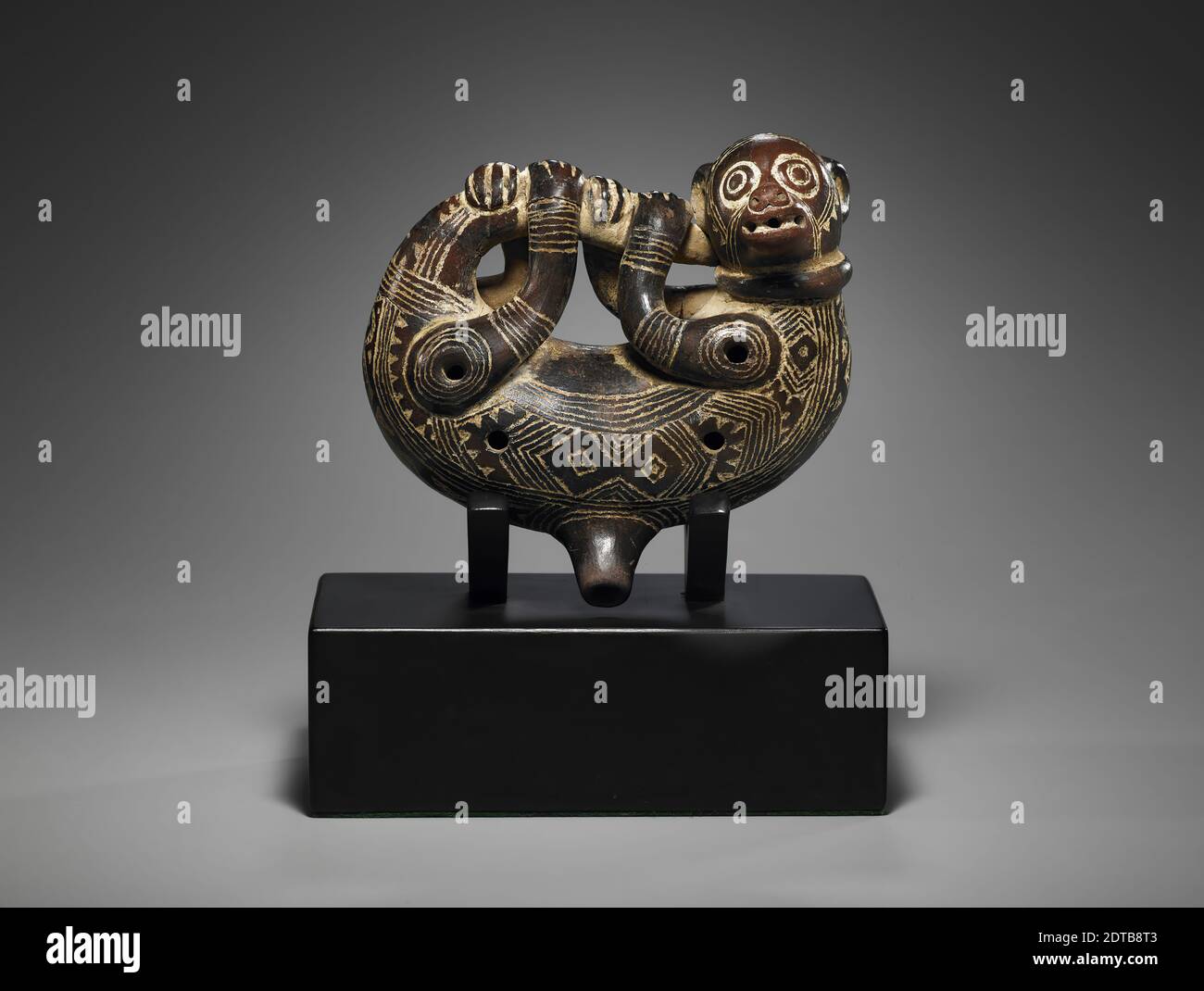 Ocarina in the Shape of a Kinkajou, Incised ceramic with pigment, Castillo engraved, 11.43 × 15.24 cm (4 1/2 × 6 in.), This kinkajou is shown doing what it does best: hanging. It uses its tail here as it would the limb of a tree. The pose makes the figure easy to hold and use as an ocarina (whistle). The hip and shoulder joints, as well as its flanks, have tone holes. The mouthpiece projects from the center of its back. The kinkajou, also called the honey bear, is a member of the raccoon family., Made in Costa Rica, Costa Rica, Carrillo, Nicoya, 13th–16th century, Musical Instruments Stock Photohttps://www.alamy.com/image-license-details/?v=1https://www.alamy.com/ocarina-in-the-shape-of-akinkajou-incised-ceramic-with-pigment-castillo-engraved-1143-1524-cm-4-12-6in-this-kinkajou-is-shown-doing-what-it-does-best-hanging-it-uses-its-tail-here-as-it-would-the-limb-of-a-tree-the-pose-makes-the-figure-easy-to-hold-and-use-as-an-ocarina-whistle-the-hip-and-shoulder-joints-as-well-as-its-flanks-have-tone-holes-the-mouthpiece-projects-from-the-center-of-its-back-the-kinkajou-also-called-the-honey-bear-is-a-member-of-the-raccoon-family-made-in-costa-rica-costa-rica-carrillonicoya-13th16thcentury-musicalinstruments-image393628259.html
Ocarina in the Shape of a Kinkajou, Incised ceramic with pigment, Castillo engraved, 11.43 × 15.24 cm (4 1/2 × 6 in.), This kinkajou is shown doing what it does best: hanging. It uses its tail here as it would the limb of a tree. The pose makes the figure easy to hold and use as an ocarina (whistle). The hip and shoulder joints, as well as its flanks, have tone holes. The mouthpiece projects from the center of its back. The kinkajou, also called the honey bear, is a member of the raccoon family., Made in Costa Rica, Costa Rica, Carrillo, Nicoya, 13th–16th century, Musical Instruments Stock Photohttps://www.alamy.com/image-license-details/?v=1https://www.alamy.com/ocarina-in-the-shape-of-akinkajou-incised-ceramic-with-pigment-castillo-engraved-1143-1524-cm-4-12-6in-this-kinkajou-is-shown-doing-what-it-does-best-hanging-it-uses-its-tail-here-as-it-would-the-limb-of-a-tree-the-pose-makes-the-figure-easy-to-hold-and-use-as-an-ocarina-whistle-the-hip-and-shoulder-joints-as-well-as-its-flanks-have-tone-holes-the-mouthpiece-projects-from-the-center-of-its-back-the-kinkajou-also-called-the-honey-bear-is-a-member-of-the-raccoon-family-made-in-costa-rica-costa-rica-carrillonicoya-13th16thcentury-musicalinstruments-image393628259.htmlRM2DTB8T3–Ocarina in the Shape of a Kinkajou, Incised ceramic with pigment, Castillo engraved, 11.43 × 15.24 cm (4 1/2 × 6 in.), This kinkajou is shown doing what it does best: hanging. It uses its tail here as it would the limb of a tree. The pose makes the figure easy to hold and use as an ocarina (whistle). The hip and shoulder joints, as well as its flanks, have tone holes. The mouthpiece projects from the center of its back. The kinkajou, also called the honey bear, is a member of the raccoon family., Made in Costa Rica, Costa Rica, Carrillo, Nicoya, 13th–16th century, Musical Instruments
 Mexico Coati Mundi wildlife jungle tree. The Coati or Coatimundi is wildlife animal, member of the raccoon family. Lives in jungles of Mexico. Stock Photohttps://www.alamy.com/image-license-details/?v=1https://www.alamy.com/stock-photo-mexico-coati-mundi-wildlife-jungle-tree-the-coati-or-coatimundi-is-130247370.html
Mexico Coati Mundi wildlife jungle tree. The Coati or Coatimundi is wildlife animal, member of the raccoon family. Lives in jungles of Mexico. Stock Photohttps://www.alamy.com/image-license-details/?v=1https://www.alamy.com/stock-photo-mexico-coati-mundi-wildlife-jungle-tree-the-coati-or-coatimundi-is-130247370.htmlRMHFW7RP–Mexico Coati Mundi wildlife jungle tree. The Coati or Coatimundi is wildlife animal, member of the raccoon family. Lives in jungles of Mexico.
 Coati, a member of the raccoon family, at Iguassu falls, Brazil Stock Photohttps://www.alamy.com/image-license-details/?v=1https://www.alamy.com/stock-photo-coati-a-member-of-the-raccoon-family-at-iguassu-falls-brazil-55393119.html
Coati, a member of the raccoon family, at Iguassu falls, Brazil Stock Photohttps://www.alamy.com/image-license-details/?v=1https://www.alamy.com/stock-photo-coati-a-member-of-the-raccoon-family-at-iguassu-falls-brazil-55393119.htmlRMD63ADK–Coati, a member of the raccoon family, at Iguassu falls, Brazil
 Mexico jungle wildlife Coati mundi animal eating. The Coati or Coatimundi is wildlife animal, member of the raccoon family. Stock Photohttps://www.alamy.com/image-license-details/?v=1https://www.alamy.com/stock-photo-mexico-jungle-wildlife-coati-mundi-animal-eating-the-coati-or-coatimundi-130242537.html
Mexico jungle wildlife Coati mundi animal eating. The Coati or Coatimundi is wildlife animal, member of the raccoon family. Stock Photohttps://www.alamy.com/image-license-details/?v=1https://www.alamy.com/stock-photo-mexico-jungle-wildlife-coati-mundi-animal-eating-the-coati-or-coatimundi-130242537.htmlRMHFW1K5–Mexico jungle wildlife Coati mundi animal eating. The Coati or Coatimundi is wildlife animal, member of the raccoon family.
 Central America, Panama. South American coati, a member of the raccoon family. Stock Photohttps://www.alamy.com/image-license-details/?v=1https://www.alamy.com/central-america-panama-south-american-coati-a-member-of-the-raccoon-family-image222423295.html
Central America, Panama. South American coati, a member of the raccoon family. Stock Photohttps://www.alamy.com/image-license-details/?v=1https://www.alamy.com/central-america-panama-south-american-coati-a-member-of-the-raccoon-family-image222423295.htmlRMPWT753–Central America, Panama. South American coati, a member of the raccoon family.
 A South American coati, Nasua nasua, sits alone, which is a coati species and a member of the raccoon family Procyonidae, from tropical and subtropica Stock Photohttps://www.alamy.com/image-license-details/?v=1https://www.alamy.com/a-south-american-coati-nasua-nasua-sits-alone-which-is-a-coati-species-and-a-member-of-the-raccoon-family-procyonidae-from-tropical-and-subtropica-image475267580.html
A South American coati, Nasua nasua, sits alone, which is a coati species and a member of the raccoon family Procyonidae, from tropical and subtropica Stock Photohttps://www.alamy.com/image-license-details/?v=1https://www.alamy.com/a-south-american-coati-nasua-nasua-sits-alone-which-is-a-coati-species-and-a-member-of-the-raccoon-family-procyonidae-from-tropical-and-subtropica-image475267580.htmlRF2JH68J4–A South American coati, Nasua nasua, sits alone, which is a coati species and a member of the raccoon family Procyonidae, from tropical and subtropica
![The raccoon dog (Nyctereutes procyonoides [Here as Raccoon-like dog Canis procyonoides]) also known as the mangut (its Evenki name), tanuki or neoguri, is a canid indigenous to East Asia. It is the only extant species in the genus Nyctereutes. Despite its name, its closest relatives are the true foxes, and not the American raccoons. From the Book Dogs, Jackals, Wolves and Foxes A Monograph of The Canidae [from Latin, canis, 'dog') is a biological family of dog-like carnivorans. A member of this family is called a canid] By George Mivart, F.R.S. with woodcuts and 45 coloured plates drawn from n Stock Photo The raccoon dog (Nyctereutes procyonoides [Here as Raccoon-like dog Canis procyonoides]) also known as the mangut (its Evenki name), tanuki or neoguri, is a canid indigenous to East Asia. It is the only extant species in the genus Nyctereutes. Despite its name, its closest relatives are the true foxes, and not the American raccoons. From the Book Dogs, Jackals, Wolves and Foxes A Monograph of The Canidae [from Latin, canis, 'dog') is a biological family of dog-like carnivorans. A member of this family is called a canid] By George Mivart, F.R.S. with woodcuts and 45 coloured plates drawn from n Stock Photo](https://c8.alamy.com/comp/2DA6R71/the-raccoon-dog-nyctereutes-procyonoides-here-as-raccoon-like-dog-canis-procyonoides-also-known-as-the-mangut-its-evenki-name-tanuki-or-neoguri-is-a-canid-indigenous-to-east-asia-it-is-the-only-extant-species-in-the-genus-nyctereutes-despite-its-name-its-closest-relatives-are-the-true-foxes-and-not-the-american-raccoons-from-the-book-dogs-jackals-wolves-and-foxes-a-monograph-of-the-canidae-from-latin-canis-dog-is-a-biological-family-of-dog-like-carnivorans-a-member-of-this-family-is-called-a-canid-by-george-mivart-frs-with-woodcuts-and-45-coloured-plates-drawn-from-n-2DA6R71.jpg) The raccoon dog (Nyctereutes procyonoides [Here as Raccoon-like dog Canis procyonoides]) also known as the mangut (its Evenki name), tanuki or neoguri, is a canid indigenous to East Asia. It is the only extant species in the genus Nyctereutes. Despite its name, its closest relatives are the true foxes, and not the American raccoons. From the Book Dogs, Jackals, Wolves and Foxes A Monograph of The Canidae [from Latin, canis, 'dog') is a biological family of dog-like carnivorans. A member of this family is called a canid] By George Mivart, F.R.S. with woodcuts and 45 coloured plates drawn from n Stock Photohttps://www.alamy.com/image-license-details/?v=1https://www.alamy.com/the-raccoon-dog-nyctereutes-procyonoides-here-as-raccoon-like-dog-canis-procyonoides-also-known-as-the-mangut-its-evenki-name-tanuki-or-neoguri-is-a-canid-indigenous-to-east-asia-it-is-the-only-extant-species-in-the-genus-nyctereutes-despite-its-name-its-closest-relatives-are-the-true-foxes-and-not-the-american-raccoons-from-the-book-dogs-jackals-wolves-and-foxes-a-monograph-of-the-canidae-from-latin-canis-dog-is-a-biological-family-of-dog-like-carnivorans-a-member-of-this-family-is-called-a-canid-by-george-mivart-frs-with-woodcuts-and-45-coloured-plates-drawn-from-n-image384924597.html
The raccoon dog (Nyctereutes procyonoides [Here as Raccoon-like dog Canis procyonoides]) also known as the mangut (its Evenki name), tanuki or neoguri, is a canid indigenous to East Asia. It is the only extant species in the genus Nyctereutes. Despite its name, its closest relatives are the true foxes, and not the American raccoons. From the Book Dogs, Jackals, Wolves and Foxes A Monograph of The Canidae [from Latin, canis, 'dog') is a biological family of dog-like carnivorans. A member of this family is called a canid] By George Mivart, F.R.S. with woodcuts and 45 coloured plates drawn from n Stock Photohttps://www.alamy.com/image-license-details/?v=1https://www.alamy.com/the-raccoon-dog-nyctereutes-procyonoides-here-as-raccoon-like-dog-canis-procyonoides-also-known-as-the-mangut-its-evenki-name-tanuki-or-neoguri-is-a-canid-indigenous-to-east-asia-it-is-the-only-extant-species-in-the-genus-nyctereutes-despite-its-name-its-closest-relatives-are-the-true-foxes-and-not-the-american-raccoons-from-the-book-dogs-jackals-wolves-and-foxes-a-monograph-of-the-canidae-from-latin-canis-dog-is-a-biological-family-of-dog-like-carnivorans-a-member-of-this-family-is-called-a-canid-by-george-mivart-frs-with-woodcuts-and-45-coloured-plates-drawn-from-n-image384924597.htmlRF2DA6R71–The raccoon dog (Nyctereutes procyonoides [Here as Raccoon-like dog Canis procyonoides]) also known as the mangut (its Evenki name), tanuki or neoguri, is a canid indigenous to East Asia. It is the only extant species in the genus Nyctereutes. Despite its name, its closest relatives are the true foxes, and not the American raccoons. From the Book Dogs, Jackals, Wolves and Foxes A Monograph of The Canidae [from Latin, canis, 'dog') is a biological family of dog-like carnivorans. A member of this family is called a canid] By George Mivart, F.R.S. with woodcuts and 45 coloured plates drawn from n
![Group of white-nosed coati (Nasua narica),[2] also known as the coatimundi is a species of coati and a member of the family Procyonidae (raccoons and Stock Photo Group of white-nosed coati (Nasua narica),[2] also known as the coatimundi is a species of coati and a member of the family Procyonidae (raccoons and Stock Photo](https://c8.alamy.com/comp/2WREF29/group-of-white-nosed-coati-nasua-narica-2-also-known-as-the-coatimundi-is-a-species-of-coati-and-a-member-of-the-family-procyonidae-raccoons-and-2WREF29.jpg) Group of white-nosed coati (Nasua narica),[2] also known as the coatimundi is a species of coati and a member of the family Procyonidae (raccoons and Stock Photohttps://www.alamy.com/image-license-details/?v=1https://www.alamy.com/group-of-white-nosed-coati-nasua-narica-2-also-known-as-the-coatimundi-is-a-species-of-coati-and-a-member-of-the-family-procyonidae-raccoons-and-image599608753.html
Group of white-nosed coati (Nasua narica),[2] also known as the coatimundi is a species of coati and a member of the family Procyonidae (raccoons and Stock Photohttps://www.alamy.com/image-license-details/?v=1https://www.alamy.com/group-of-white-nosed-coati-nasua-narica-2-also-known-as-the-coatimundi-is-a-species-of-coati-and-a-member-of-the-family-procyonidae-raccoons-and-image599608753.htmlRF2WREF29–Group of white-nosed coati (Nasua narica),[2] also known as the coatimundi is a species of coati and a member of the family Procyonidae (raccoons and
 White-nosed Coati - Nasua narica, known as the coatimundi, member of the family Procyonidae (raccoons and their relatives). Local Spanish names for th Stock Photohttps://www.alamy.com/image-license-details/?v=1https://www.alamy.com/white-nosed-coati-nasua-narica-known-as-the-coatimundi-member-of-the-family-procyonidae-raccoons-and-their-relatives-local-spanish-names-for-th-image384119775.html
White-nosed Coati - Nasua narica, known as the coatimundi, member of the family Procyonidae (raccoons and their relatives). Local Spanish names for th Stock Photohttps://www.alamy.com/image-license-details/?v=1https://www.alamy.com/white-nosed-coati-nasua-narica-known-as-the-coatimundi-member-of-the-family-procyonidae-raccoons-and-their-relatives-local-spanish-names-for-th-image384119775.htmlRF2D8X4KB–White-nosed Coati - Nasua narica, known as the coatimundi, member of the family Procyonidae (raccoons and their relatives). Local Spanish names for th
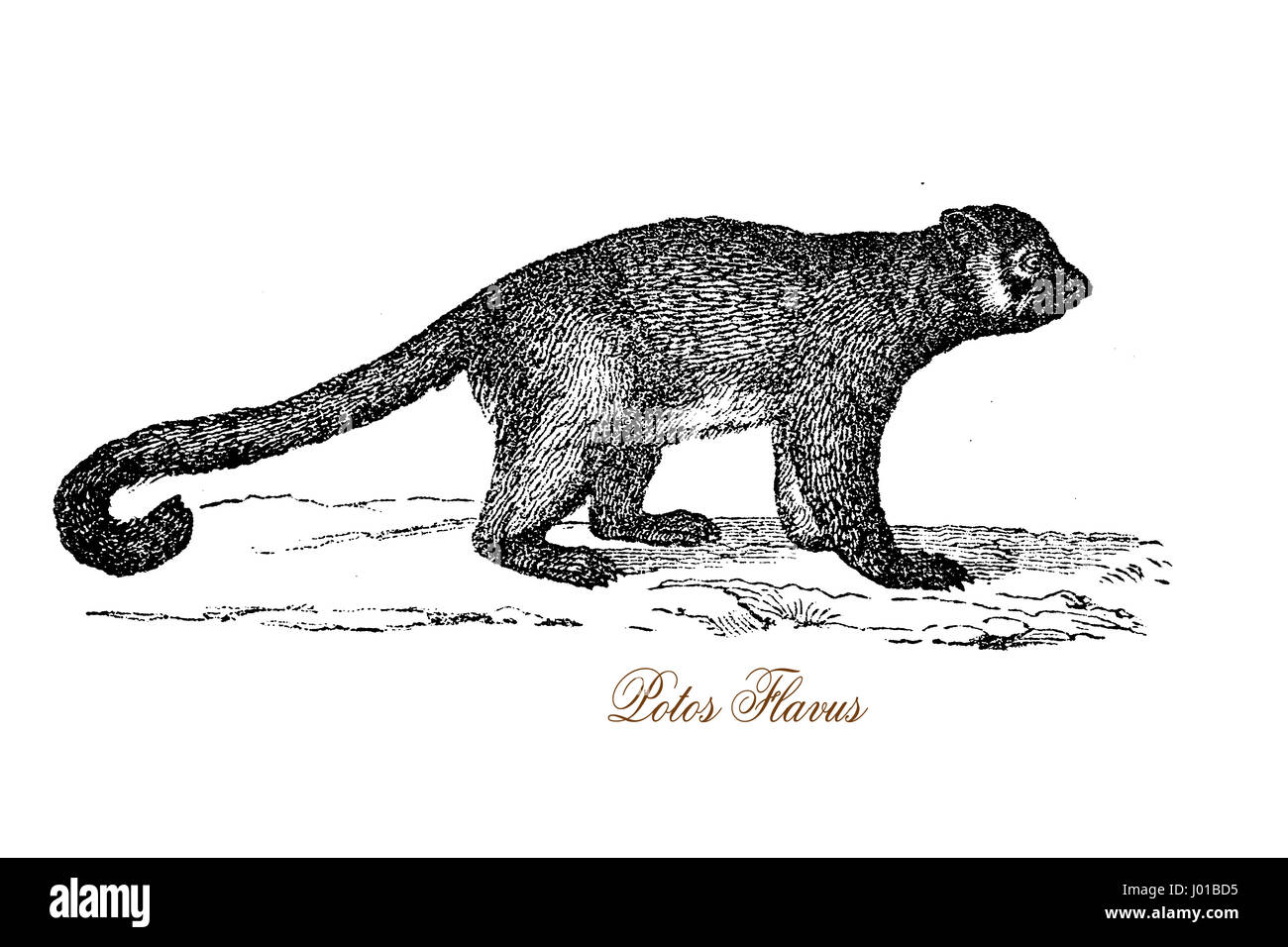 The kinkajou ( potos flavus) is a rainforest mammal of the family Procyonidae. It is the only member of the genus Potos and is also known as the 'honey bear'. Stock Photohttps://www.alamy.com/image-license-details/?v=1https://www.alamy.com/stock-photo-the-kinkajou-potos-flavus-is-a-rainforest-mammal-of-the-family-procyonidae-137713889.html
The kinkajou ( potos flavus) is a rainforest mammal of the family Procyonidae. It is the only member of the genus Potos and is also known as the 'honey bear'. Stock Photohttps://www.alamy.com/image-license-details/?v=1https://www.alamy.com/stock-photo-the-kinkajou-potos-flavus-is-a-rainforest-mammal-of-the-family-procyonidae-137713889.htmlRFJ01BD5–The kinkajou ( potos flavus) is a rainforest mammal of the family Procyonidae. It is the only member of the genus Potos and is also known as the 'honey bear'.
 Close-up of a Brown Nosed Coati, at Wingham Wildlife Park, Kent Stock Photohttps://www.alamy.com/image-license-details/?v=1https://www.alamy.com/close-up-of-a-brown-nosed-coati-at-wingham-wildlife-park-kent-image354063405.html
Close-up of a Brown Nosed Coati, at Wingham Wildlife Park, Kent Stock Photohttps://www.alamy.com/image-license-details/?v=1https://www.alamy.com/close-up-of-a-brown-nosed-coati-at-wingham-wildlife-park-kent-image354063405.htmlRM2BG0YDH–Close-up of a Brown Nosed Coati, at Wingham Wildlife Park, Kent
 White-nosed coati (Nasua narica), known as coatimundi. Species of coati and member of family Procyonidae (raccoons and their relatives). Mountains of Stock Photohttps://www.alamy.com/image-license-details/?v=1https://www.alamy.com/white-nosed-coati-nasua-narica-known-as-coatimundi-species-of-coati-and-member-of-family-procyonidae-raccoons-and-their-relatives-mountains-of-image569275442.html
White-nosed coati (Nasua narica), known as coatimundi. Species of coati and member of family Procyonidae (raccoons and their relatives). Mountains of Stock Photohttps://www.alamy.com/image-license-details/?v=1https://www.alamy.com/white-nosed-coati-nasua-narica-known-as-coatimundi-species-of-coati-and-member-of-family-procyonidae-raccoons-and-their-relatives-mountains-of-image569275442.htmlRF2T24MHP–White-nosed coati (Nasua narica), known as coatimundi. Species of coati and member of family Procyonidae (raccoons and their relatives). Mountains of
 . Fourteen weeks in zoology. Zoology. Urams mari&mm. White Bear. latitudes it passes the winter usually in a hollow log, without becoming insensible. The Polar Bear* is the largest member of this family. It feeds on seals, fish, and walruses, which it pursues in the water, swimming and diving with great skill. To secure firm footing on the ice, the soles of the feet are thickly covered with long hairs. It passes January and February in a lethargy, buried in the snow or hidden in the ice-rifts. Procyonidse.—The Raccoon is the only representative of its family in the United States. It derive Stock Photohttps://www.alamy.com/image-license-details/?v=1https://www.alamy.com/fourteen-weeks-in-zoology-zoology-urams-mariampmm-white-bear-latitudes-it-passes-the-winter-usually-in-a-hollow-log-without-becoming-insensible-the-polar-bear-is-the-largest-member-of-this-family-it-feeds-on-seals-fish-and-walruses-which-it-pursues-in-the-water-swimming-and-diving-with-great-skill-to-secure-firm-footing-on-the-ice-the-soles-of-the-feet-are-thickly-covered-with-long-hairs-it-passes-january-and-february-in-a-lethargy-buried-in-the-snow-or-hidden-in-the-ice-rifts-procyonidsethe-raccoon-is-the-only-representative-of-its-family-in-the-united-states-it-derive-image232263171.html
. Fourteen weeks in zoology. Zoology. Urams mari&mm. White Bear. latitudes it passes the winter usually in a hollow log, without becoming insensible. The Polar Bear* is the largest member of this family. It feeds on seals, fish, and walruses, which it pursues in the water, swimming and diving with great skill. To secure firm footing on the ice, the soles of the feet are thickly covered with long hairs. It passes January and February in a lethargy, buried in the snow or hidden in the ice-rifts. Procyonidse.—The Raccoon is the only representative of its family in the United States. It derive Stock Photohttps://www.alamy.com/image-license-details/?v=1https://www.alamy.com/fourteen-weeks-in-zoology-zoology-urams-mariampmm-white-bear-latitudes-it-passes-the-winter-usually-in-a-hollow-log-without-becoming-insensible-the-polar-bear-is-the-largest-member-of-this-family-it-feeds-on-seals-fish-and-walruses-which-it-pursues-in-the-water-swimming-and-diving-with-great-skill-to-secure-firm-footing-on-the-ice-the-soles-of-the-feet-are-thickly-covered-with-long-hairs-it-passes-january-and-february-in-a-lethargy-buried-in-the-snow-or-hidden-in-the-ice-rifts-procyonidsethe-raccoon-is-the-only-representative-of-its-family-in-the-united-states-it-derive-image232263171.htmlRMRDTE17–. Fourteen weeks in zoology. Zoology. Urams mari&mm. White Bear. latitudes it passes the winter usually in a hollow log, without becoming insensible. The Polar Bear* is the largest member of this family. It feeds on seals, fish, and walruses, which it pursues in the water, swimming and diving with great skill. To secure firm footing on the ice, the soles of the feet are thickly covered with long hairs. It passes January and February in a lethargy, buried in the snow or hidden in the ice-rifts. Procyonidse.—The Raccoon is the only representative of its family in the United States. It derive
 Shamon the kinkajou, also known as a 'honey bear' (because of its colour and love of the sticky substance) with Edinburgh Zoo staff member Kate Turnbull during a photocall at the zoo Wednesday April 5, 2006. The Kinkajou is a nocturnal animal which lives among the upper canopy of the tropical forests of southern Mexico and Brazil. It is a member of the raccoon family, and has a long prehensile tail to swing back and forth. The most interesting characteristic of the kinkajou, however is its long tongue which can grow to an incredible 6 inches and is used to extract nectar from flowers. Shaman, Stock Photohttps://www.alamy.com/image-license-details/?v=1https://www.alamy.com/stock-photo-shamon-the-kinkajou-also-known-as-a-honey-bear-because-of-its-colour-108996718.html
Shamon the kinkajou, also known as a 'honey bear' (because of its colour and love of the sticky substance) with Edinburgh Zoo staff member Kate Turnbull during a photocall at the zoo Wednesday April 5, 2006. The Kinkajou is a nocturnal animal which lives among the upper canopy of the tropical forests of southern Mexico and Brazil. It is a member of the raccoon family, and has a long prehensile tail to swing back and forth. The most interesting characteristic of the kinkajou, however is its long tongue which can grow to an incredible 6 inches and is used to extract nectar from flowers. Shaman, Stock Photohttps://www.alamy.com/image-license-details/?v=1https://www.alamy.com/stock-photo-shamon-the-kinkajou-also-known-as-a-honey-bear-because-of-its-colour-108996718.htmlRMG996BX–Shamon the kinkajou, also known as a 'honey bear' (because of its colour and love of the sticky substance) with Edinburgh Zoo staff member Kate Turnbull during a photocall at the zoo Wednesday April 5, 2006. The Kinkajou is a nocturnal animal which lives among the upper canopy of the tropical forests of southern Mexico and Brazil. It is a member of the raccoon family, and has a long prehensile tail to swing back and forth. The most interesting characteristic of the kinkajou, however is its long tongue which can grow to an incredible 6 inches and is used to extract nectar from flowers. Shaman,
 A white-nosed Coati on Egg Beach in Costa Rica - a member of the raccoon family. (Nasua Narica) Stock Photohttps://www.alamy.com/image-license-details/?v=1https://www.alamy.com/a-white-nosed-coati-on-egg-beach-in-costa-rica-a-member-of-the-raccoon-image62224705.html
A white-nosed Coati on Egg Beach in Costa Rica - a member of the raccoon family. (Nasua Narica) Stock Photohttps://www.alamy.com/image-license-details/?v=1https://www.alamy.com/a-white-nosed-coati-on-egg-beach-in-costa-rica-a-member-of-the-raccoon-image62224705.htmlRFDH6G6W–A white-nosed Coati on Egg Beach in Costa Rica - a member of the raccoon family. (Nasua Narica)
 Mexico jungle wildlife Coati mundi animal eating. The Coati or Coatimundi is wildlife animal, member of the raccoon family. Stock Photohttps://www.alamy.com/image-license-details/?v=1https://www.alamy.com/stock-photo-mexico-jungle-wildlife-coati-mundi-animal-eating-the-coati-or-coatimundi-130242654.html
Mexico jungle wildlife Coati mundi animal eating. The Coati or Coatimundi is wildlife animal, member of the raccoon family. Stock Photohttps://www.alamy.com/image-license-details/?v=1https://www.alamy.com/stock-photo-mexico-jungle-wildlife-coati-mundi-animal-eating-the-coati-or-coatimundi-130242654.htmlRMHFW1RA–Mexico jungle wildlife Coati mundi animal eating. The Coati or Coatimundi is wildlife animal, member of the raccoon family.
 Central America, Panama. South American coati, a member of the raccoon family. Stock Photohttps://www.alamy.com/image-license-details/?v=1https://www.alamy.com/central-america-panama-south-american-coati-a-member-of-the-raccoon-family-image222423298.html
Central America, Panama. South American coati, a member of the raccoon family. Stock Photohttps://www.alamy.com/image-license-details/?v=1https://www.alamy.com/central-america-panama-south-american-coati-a-member-of-the-raccoon-family-image222423298.htmlRMPWT756–Central America, Panama. South American coati, a member of the raccoon family.
 White-nosed Coati - Nasua narica, known as the coatimundi, member of the family Procyonidae (raccoons and their relatives). Local Spanish names for th Stock Photohttps://www.alamy.com/image-license-details/?v=1https://www.alamy.com/white-nosed-coati-nasua-narica-known-as-the-coatimundi-member-of-the-family-procyonidae-raccoons-and-their-relatives-local-spanish-names-for-th-image245834819.html
White-nosed Coati - Nasua narica, known as the coatimundi, member of the family Procyonidae (raccoons and their relatives). Local Spanish names for th Stock Photohttps://www.alamy.com/image-license-details/?v=1https://www.alamy.com/white-nosed-coati-nasua-narica-known-as-the-coatimundi-member-of-the-family-procyonidae-raccoons-and-their-relatives-local-spanish-names-for-th-image245834819.htmlRFT7XMPY–White-nosed Coati - Nasua narica, known as the coatimundi, member of the family Procyonidae (raccoons and their relatives). Local Spanish names for th
 Close-up of a Brown Nosed Coati, at Wingham Wildlife Park, Kent Stock Photohttps://www.alamy.com/image-license-details/?v=1https://www.alamy.com/close-up-of-a-brown-nosed-coati-at-wingham-wildlife-park-kent-image354062352.html
Close-up of a Brown Nosed Coati, at Wingham Wildlife Park, Kent Stock Photohttps://www.alamy.com/image-license-details/?v=1https://www.alamy.com/close-up-of-a-brown-nosed-coati-at-wingham-wildlife-park-kent-image354062352.htmlRM2BG0X40–Close-up of a Brown Nosed Coati, at Wingham Wildlife Park, Kent
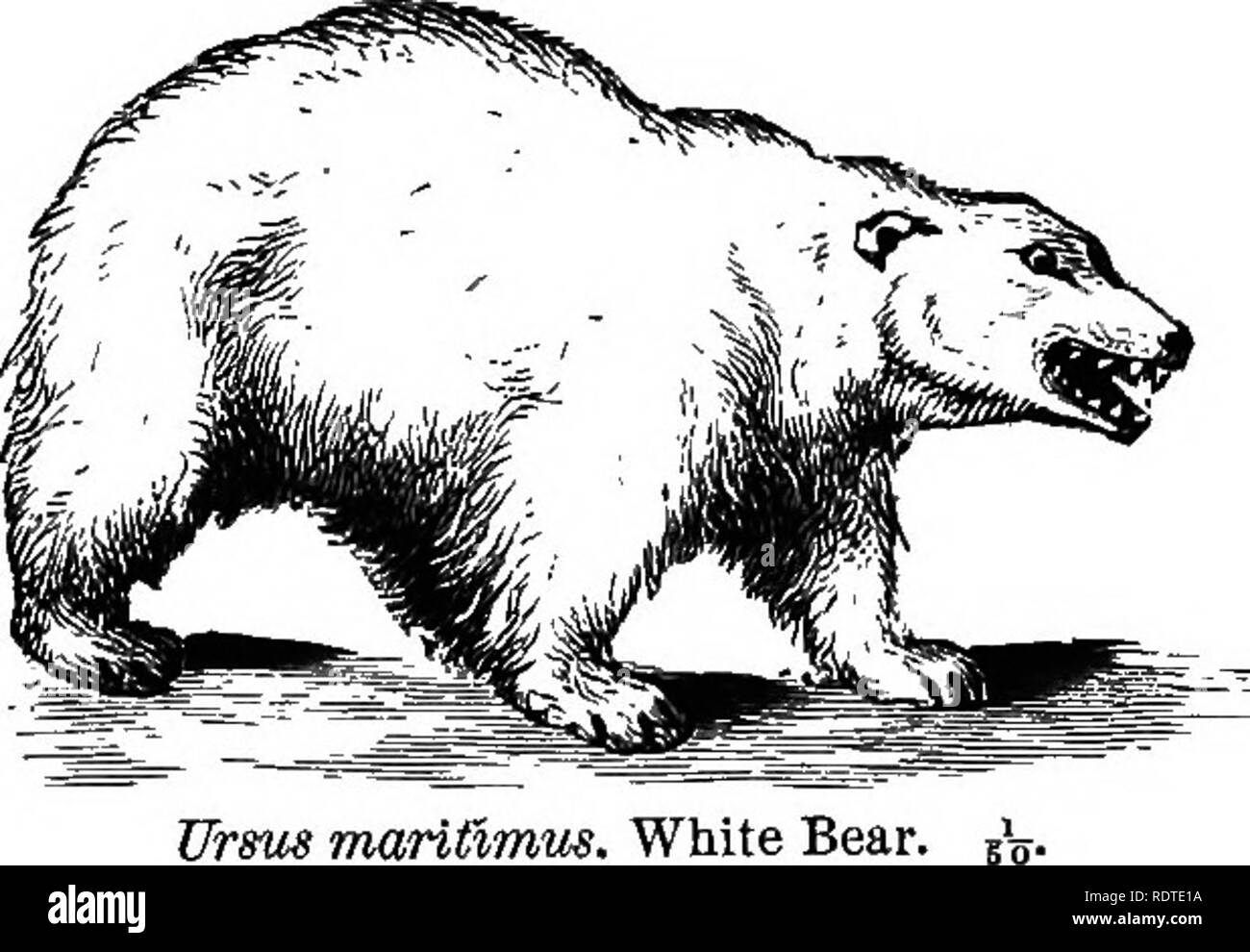 . Fourteen weeks in zoology. Zoology. 48 SUBKINGDOM VEETEBEATA. Mg 61.. Urams mari&mm. White Bear. latitudes it passes the winter usually in a hollow log, without becoming insensible. The Polar Bear* is the largest member of this family. It feeds on seals, fish, and walruses, which it pursues in the water, swimming and diving with great skill. To secure firm footing on the ice, the soles of the feet are thickly covered with long hairs. It passes January and February in a lethargy, buried in the snow or hidden in the ice-rifts. Procyonidse.—The Raccoon is the only representative of its fami Stock Photohttps://www.alamy.com/image-license-details/?v=1https://www.alamy.com/fourteen-weeks-in-zoology-zoology-48-subkingdom-veetebeata-mg-61-urams-mariampmm-white-bear-latitudes-it-passes-the-winter-usually-in-a-hollow-log-without-becoming-insensible-the-polar-bear-is-the-largest-member-of-this-family-it-feeds-on-seals-fish-and-walruses-which-it-pursues-in-the-water-swimming-and-diving-with-great-skill-to-secure-firm-footing-on-the-ice-the-soles-of-the-feet-are-thickly-covered-with-long-hairs-it-passes-january-and-february-in-a-lethargy-buried-in-the-snow-or-hidden-in-the-ice-rifts-procyonidsethe-raccoon-is-the-only-representative-of-its-fami-image232263174.html
. Fourteen weeks in zoology. Zoology. 48 SUBKINGDOM VEETEBEATA. Mg 61.. Urams mari&mm. White Bear. latitudes it passes the winter usually in a hollow log, without becoming insensible. The Polar Bear* is the largest member of this family. It feeds on seals, fish, and walruses, which it pursues in the water, swimming and diving with great skill. To secure firm footing on the ice, the soles of the feet are thickly covered with long hairs. It passes January and February in a lethargy, buried in the snow or hidden in the ice-rifts. Procyonidse.—The Raccoon is the only representative of its fami Stock Photohttps://www.alamy.com/image-license-details/?v=1https://www.alamy.com/fourteen-weeks-in-zoology-zoology-48-subkingdom-veetebeata-mg-61-urams-mariampmm-white-bear-latitudes-it-passes-the-winter-usually-in-a-hollow-log-without-becoming-insensible-the-polar-bear-is-the-largest-member-of-this-family-it-feeds-on-seals-fish-and-walruses-which-it-pursues-in-the-water-swimming-and-diving-with-great-skill-to-secure-firm-footing-on-the-ice-the-soles-of-the-feet-are-thickly-covered-with-long-hairs-it-passes-january-and-february-in-a-lethargy-buried-in-the-snow-or-hidden-in-the-ice-rifts-procyonidsethe-raccoon-is-the-only-representative-of-its-fami-image232263174.htmlRMRDTE1A–. Fourteen weeks in zoology. Zoology. 48 SUBKINGDOM VEETEBEATA. Mg 61.. Urams mari&mm. White Bear. latitudes it passes the winter usually in a hollow log, without becoming insensible. The Polar Bear* is the largest member of this family. It feeds on seals, fish, and walruses, which it pursues in the water, swimming and diving with great skill. To secure firm footing on the ice, the soles of the feet are thickly covered with long hairs. It passes January and February in a lethargy, buried in the snow or hidden in the ice-rifts. Procyonidse.—The Raccoon is the only representative of its fami
 Shamon the kinkajou, also known as a 'honey bear' (because of its colour and love of the sticky substance) with Edinburgh Zoo animal keeper Barry Clifford during a photocall at the zoo Wednesday April 5, 2006. The Kinkajou is a nocturnal animal which lives among the upper canopy of the tropical forests of southern Mexico and Brazil. It is a member of the raccoon family, and has a long prehensile tail to swing back and forth. The most interesting characteristic of the kinkajou, however is its long tongue which can grow to an incredible 6 inches and is used to extract nectar from flowers. Stock Photohttps://www.alamy.com/image-license-details/?v=1https://www.alamy.com/stock-photo-shamon-the-kinkajou-also-known-as-a-honey-bear-because-of-its-colour-108996732.html
Shamon the kinkajou, also known as a 'honey bear' (because of its colour and love of the sticky substance) with Edinburgh Zoo animal keeper Barry Clifford during a photocall at the zoo Wednesday April 5, 2006. The Kinkajou is a nocturnal animal which lives among the upper canopy of the tropical forests of southern Mexico and Brazil. It is a member of the raccoon family, and has a long prehensile tail to swing back and forth. The most interesting characteristic of the kinkajou, however is its long tongue which can grow to an incredible 6 inches and is used to extract nectar from flowers. Stock Photohttps://www.alamy.com/image-license-details/?v=1https://www.alamy.com/stock-photo-shamon-the-kinkajou-also-known-as-a-honey-bear-because-of-its-colour-108996732.htmlRMG996CC–Shamon the kinkajou, also known as a 'honey bear' (because of its colour and love of the sticky substance) with Edinburgh Zoo animal keeper Barry Clifford during a photocall at the zoo Wednesday April 5, 2006. The Kinkajou is a nocturnal animal which lives among the upper canopy of the tropical forests of southern Mexico and Brazil. It is a member of the raccoon family, and has a long prehensile tail to swing back and forth. The most interesting characteristic of the kinkajou, however is its long tongue which can grow to an incredible 6 inches and is used to extract nectar from flowers.
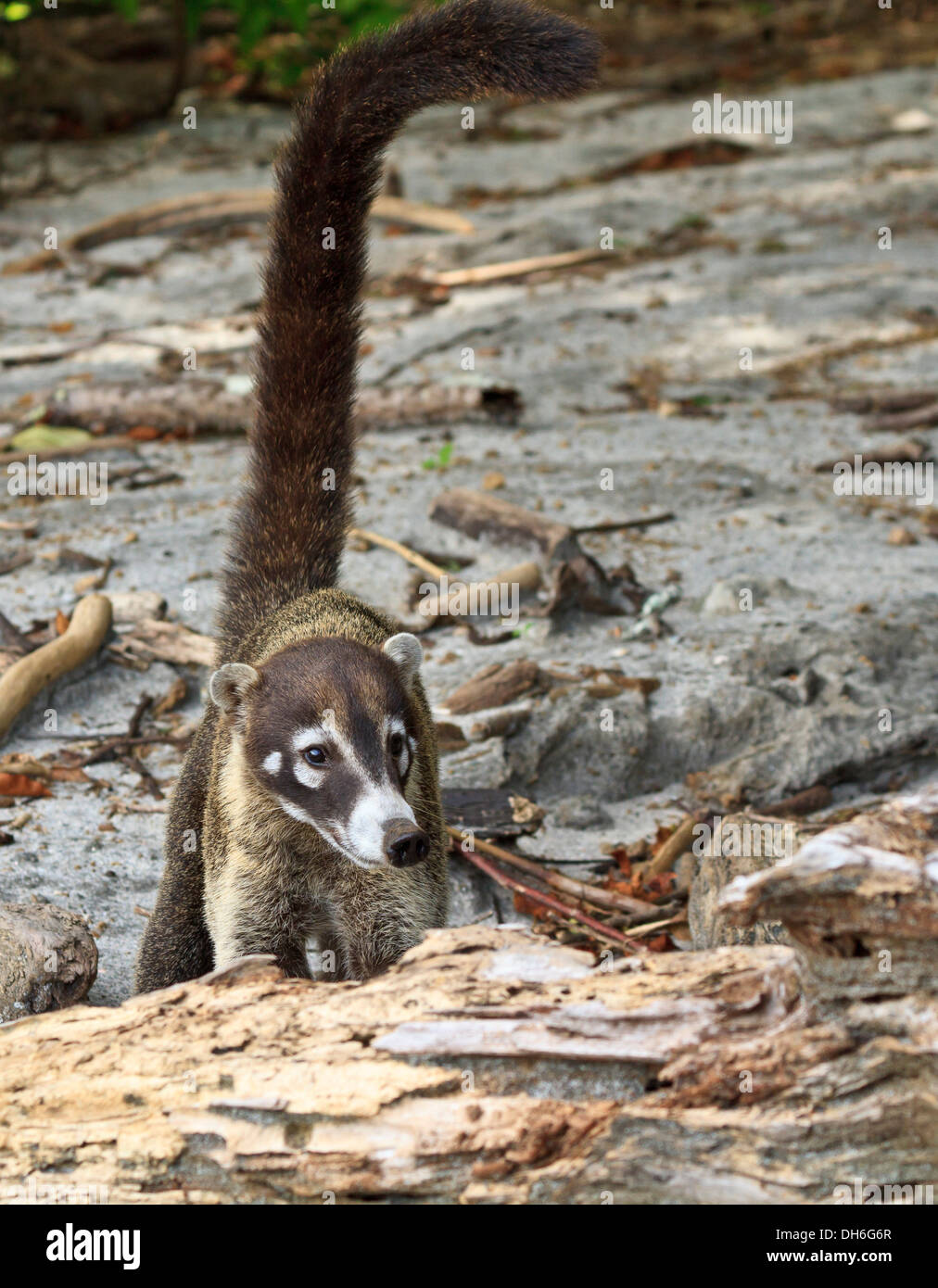 A white-nosed Coati on a Costa Rican beach with a long tail - a member of the raccoon family. (Nasua Narica) Stock Photohttps://www.alamy.com/image-license-details/?v=1https://www.alamy.com/a-white-nosed-coati-on-a-costa-rican-beach-with-a-long-tail-a-member-image62224703.html
A white-nosed Coati on a Costa Rican beach with a long tail - a member of the raccoon family. (Nasua Narica) Stock Photohttps://www.alamy.com/image-license-details/?v=1https://www.alamy.com/a-white-nosed-coati-on-a-costa-rican-beach-with-a-long-tail-a-member-image62224703.htmlRFDH6G6R–A white-nosed Coati on a Costa Rican beach with a long tail - a member of the raccoon family. (Nasua Narica)
 Mexico jungle wildlife Coati mundi animal eating. The Coati or Coatimundi is wildlife animal, member of the raccoon family. Stock Photohttps://www.alamy.com/image-license-details/?v=1https://www.alamy.com/stock-photo-mexico-jungle-wildlife-coati-mundi-animal-eating-the-coati-or-coatimundi-130242741.html
Mexico jungle wildlife Coati mundi animal eating. The Coati or Coatimundi is wildlife animal, member of the raccoon family. Stock Photohttps://www.alamy.com/image-license-details/?v=1https://www.alamy.com/stock-photo-mexico-jungle-wildlife-coati-mundi-animal-eating-the-coati-or-coatimundi-130242741.htmlRMHFW1XD–Mexico jungle wildlife Coati mundi animal eating. The Coati or Coatimundi is wildlife animal, member of the raccoon family.
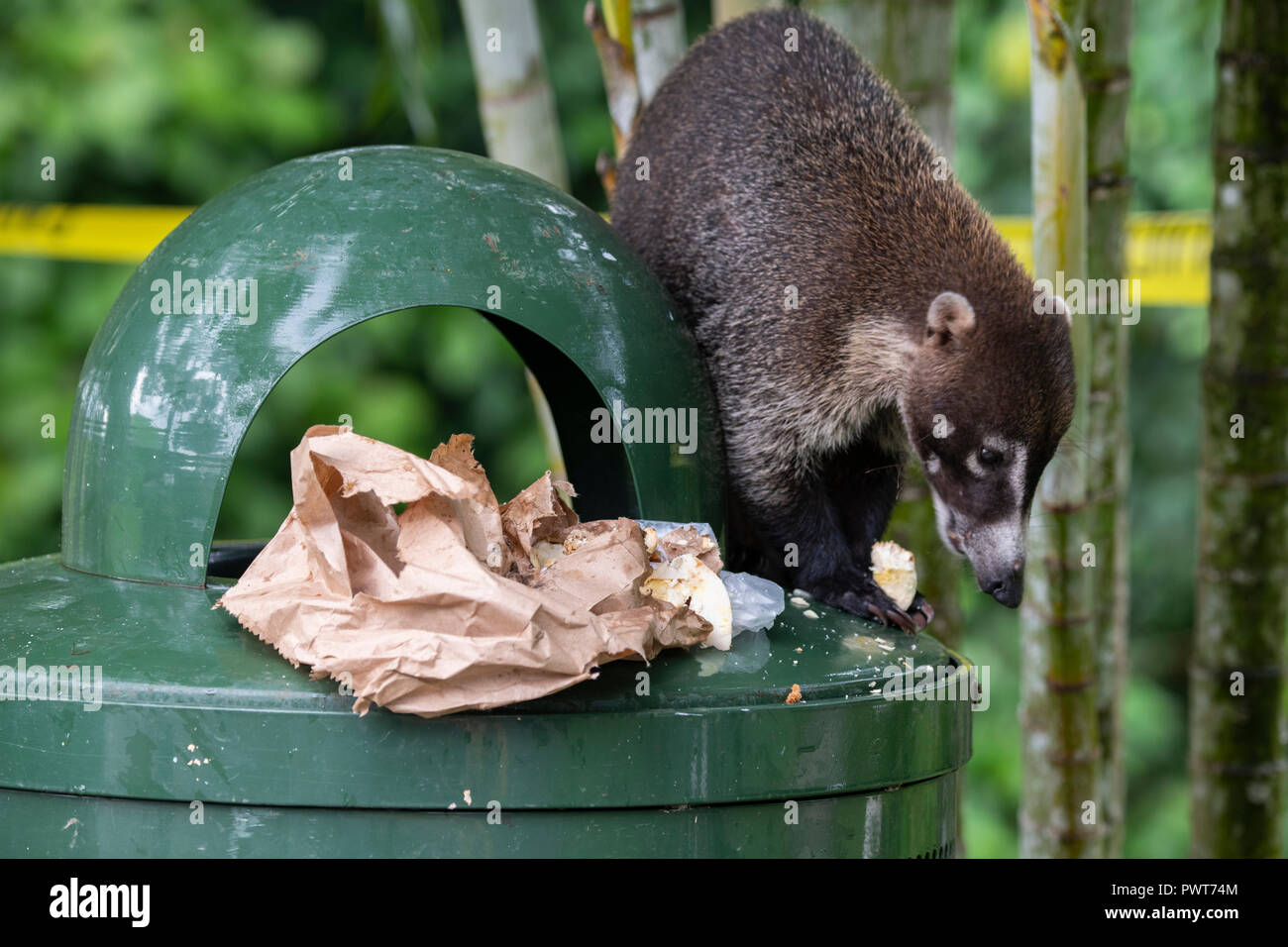 Central America, Panama. South American coati, a member of the raccoon family. Coati in a trash can. Stock Photohttps://www.alamy.com/image-license-details/?v=1https://www.alamy.com/central-america-panama-south-american-coati-a-member-of-the-raccoon-family-coati-in-a-trash-can-image222423284.html
Central America, Panama. South American coati, a member of the raccoon family. Coati in a trash can. Stock Photohttps://www.alamy.com/image-license-details/?v=1https://www.alamy.com/central-america-panama-south-american-coati-a-member-of-the-raccoon-family-coati-in-a-trash-can-image222423284.htmlRMPWT74M–Central America, Panama. South American coati, a member of the raccoon family. Coati in a trash can.
 White-nosed Coati - Nasua narica, known as the coatimundi, member of the family Procyonidae (raccoons and their relatives). Local Spanish names for th Stock Photohttps://www.alamy.com/image-license-details/?v=1https://www.alamy.com/white-nosed-coati-nasua-narica-known-as-the-coatimundi-member-of-the-family-procyonidae-raccoons-and-their-relatives-local-spanish-names-for-th-image384119806.html
White-nosed Coati - Nasua narica, known as the coatimundi, member of the family Procyonidae (raccoons and their relatives). Local Spanish names for th Stock Photohttps://www.alamy.com/image-license-details/?v=1https://www.alamy.com/white-nosed-coati-nasua-narica-known-as-the-coatimundi-member-of-the-family-procyonidae-raccoons-and-their-relatives-local-spanish-names-for-th-image384119806.htmlRF2D8X4ME–White-nosed Coati - Nasua narica, known as the coatimundi, member of the family Procyonidae (raccoons and their relatives). Local Spanish names for th
 Shamon the kinkajou, also known as a 'honey bear' (because of its colour and love of the sticky substance) with Edinburgh Zoo animal keeper Barry Clifford during a photocall at the zoo Wednesday April 5, 2006. The Kinkajou is a nocturnal animal which lives among the upper canopy of the tropical forests of southern Mexico and Brazil. It is a member of the raccoon family, and has a long prehensile tail to swing back and forth. The most interesting characteristic of the kinkajou, however is its long tongue which can grow to an incredible 6 inches and is used to extract nectar from flowers. Stock Photohttps://www.alamy.com/image-license-details/?v=1https://www.alamy.com/stock-photo-shamon-the-kinkajou-also-known-as-a-honey-bear-because-of-its-colour-108996729.html
Shamon the kinkajou, also known as a 'honey bear' (because of its colour and love of the sticky substance) with Edinburgh Zoo animal keeper Barry Clifford during a photocall at the zoo Wednesday April 5, 2006. The Kinkajou is a nocturnal animal which lives among the upper canopy of the tropical forests of southern Mexico and Brazil. It is a member of the raccoon family, and has a long prehensile tail to swing back and forth. The most interesting characteristic of the kinkajou, however is its long tongue which can grow to an incredible 6 inches and is used to extract nectar from flowers. Stock Photohttps://www.alamy.com/image-license-details/?v=1https://www.alamy.com/stock-photo-shamon-the-kinkajou-also-known-as-a-honey-bear-because-of-its-colour-108996729.htmlRMG996C9–Shamon the kinkajou, also known as a 'honey bear' (because of its colour and love of the sticky substance) with Edinburgh Zoo animal keeper Barry Clifford during a photocall at the zoo Wednesday April 5, 2006. The Kinkajou is a nocturnal animal which lives among the upper canopy of the tropical forests of southern Mexico and Brazil. It is a member of the raccoon family, and has a long prehensile tail to swing back and forth. The most interesting characteristic of the kinkajou, however is its long tongue which can grow to an incredible 6 inches and is used to extract nectar from flowers.
 Mexico jungle wildlife Coati mundi animal eating. The Coati or Coatimundi is wildlife animal, member of the raccoon family. Stock Photohttps://www.alamy.com/image-license-details/?v=1https://www.alamy.com/stock-photo-mexico-jungle-wildlife-coati-mundi-animal-eating-the-coati-or-coatimundi-130239881.html
Mexico jungle wildlife Coati mundi animal eating. The Coati or Coatimundi is wildlife animal, member of the raccoon family. Stock Photohttps://www.alamy.com/image-license-details/?v=1https://www.alamy.com/stock-photo-mexico-jungle-wildlife-coati-mundi-animal-eating-the-coati-or-coatimundi-130239881.htmlRMHFTX89–Mexico jungle wildlife Coati mundi animal eating. The Coati or Coatimundi is wildlife animal, member of the raccoon family.
 Central America, Panama. South American coati, a member of the raccoon family. Coati drinking from rain puddle. Stock Photohttps://www.alamy.com/image-license-details/?v=1https://www.alamy.com/central-america-panama-south-american-coati-a-member-of-the-raccoon-family-coati-drinking-from-rain-puddle-image222423290.html
Central America, Panama. South American coati, a member of the raccoon family. Coati drinking from rain puddle. Stock Photohttps://www.alamy.com/image-license-details/?v=1https://www.alamy.com/central-america-panama-south-american-coati-a-member-of-the-raccoon-family-coati-drinking-from-rain-puddle-image222423290.htmlRMPWT74X–Central America, Panama. South American coati, a member of the raccoon family. Coati drinking from rain puddle.
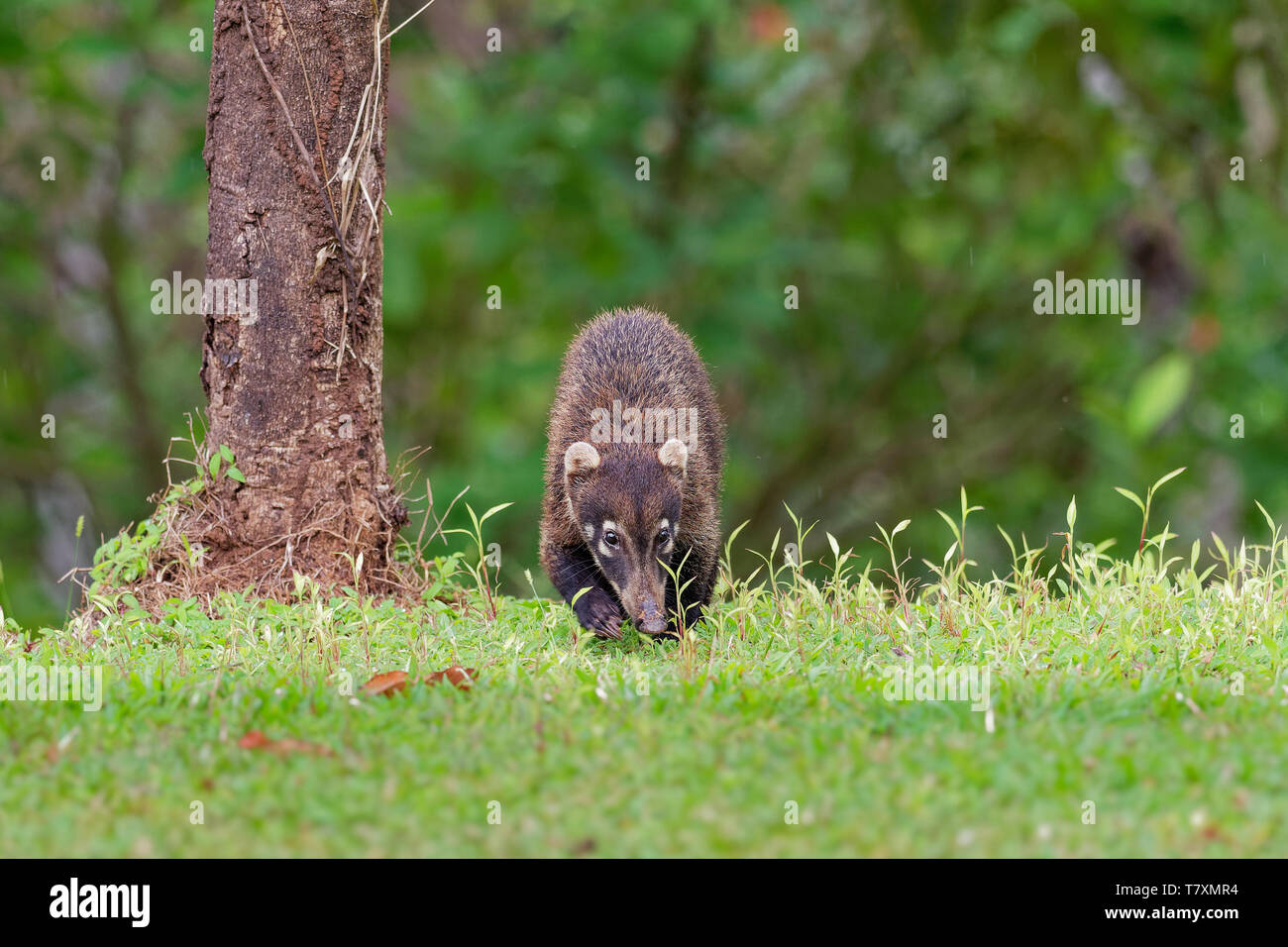 White-nosed Coati - Nasua narica, known as the coatimundi, member of the family Procyonidae (raccoons and their relatives). Local Spanish names for th Stock Photohttps://www.alamy.com/image-license-details/?v=1https://www.alamy.com/white-nosed-coati-nasua-narica-known-as-the-coatimundi-member-of-the-family-procyonidae-raccoons-and-their-relatives-local-spanish-names-for-th-image245834824.html
White-nosed Coati - Nasua narica, known as the coatimundi, member of the family Procyonidae (raccoons and their relatives). Local Spanish names for th Stock Photohttps://www.alamy.com/image-license-details/?v=1https://www.alamy.com/white-nosed-coati-nasua-narica-known-as-the-coatimundi-member-of-the-family-procyonidae-raccoons-and-their-relatives-local-spanish-names-for-th-image245834824.htmlRFT7XMR4–White-nosed Coati - Nasua narica, known as the coatimundi, member of the family Procyonidae (raccoons and their relatives). Local Spanish names for th
 ANIMALS Kinkajou Stock Photohttps://www.alamy.com/image-license-details/?v=1https://www.alamy.com/stock-photo-animals-kinkajou-108996720.html
ANIMALS Kinkajou Stock Photohttps://www.alamy.com/image-license-details/?v=1https://www.alamy.com/stock-photo-animals-kinkajou-108996720.htmlRMG996C0–ANIMALS Kinkajou
 Central America, Panama. South American coati, a member of the raccoon family. Coati drinking from rain puddle. Stock Photohttps://www.alamy.com/image-license-details/?v=1https://www.alamy.com/central-america-panama-south-american-coati-a-member-of-the-raccoon-family-coati-drinking-from-rain-puddle-image222423285.html
Central America, Panama. South American coati, a member of the raccoon family. Coati drinking from rain puddle. Stock Photohttps://www.alamy.com/image-license-details/?v=1https://www.alamy.com/central-america-panama-south-american-coati-a-member-of-the-raccoon-family-coati-drinking-from-rain-puddle-image222423285.htmlRMPWT74N–Central America, Panama. South American coati, a member of the raccoon family. Coati drinking from rain puddle.
 White-nosed Coati - Nasua narica, known as the coatimundi, member of the family Procyonidae (raccoons and their relatives). Local Spanish names for th Stock Photohttps://www.alamy.com/image-license-details/?v=1https://www.alamy.com/white-nosed-coati-nasua-narica-known-as-the-coatimundi-member-of-the-family-procyonidae-raccoons-and-their-relatives-local-spanish-names-for-th-image245834822.html
White-nosed Coati - Nasua narica, known as the coatimundi, member of the family Procyonidae (raccoons and their relatives). Local Spanish names for th Stock Photohttps://www.alamy.com/image-license-details/?v=1https://www.alamy.com/white-nosed-coati-nasua-narica-known-as-the-coatimundi-member-of-the-family-procyonidae-raccoons-and-their-relatives-local-spanish-names-for-th-image245834822.htmlRFT7XMR2–White-nosed Coati - Nasua narica, known as the coatimundi, member of the family Procyonidae (raccoons and their relatives). Local Spanish names for th
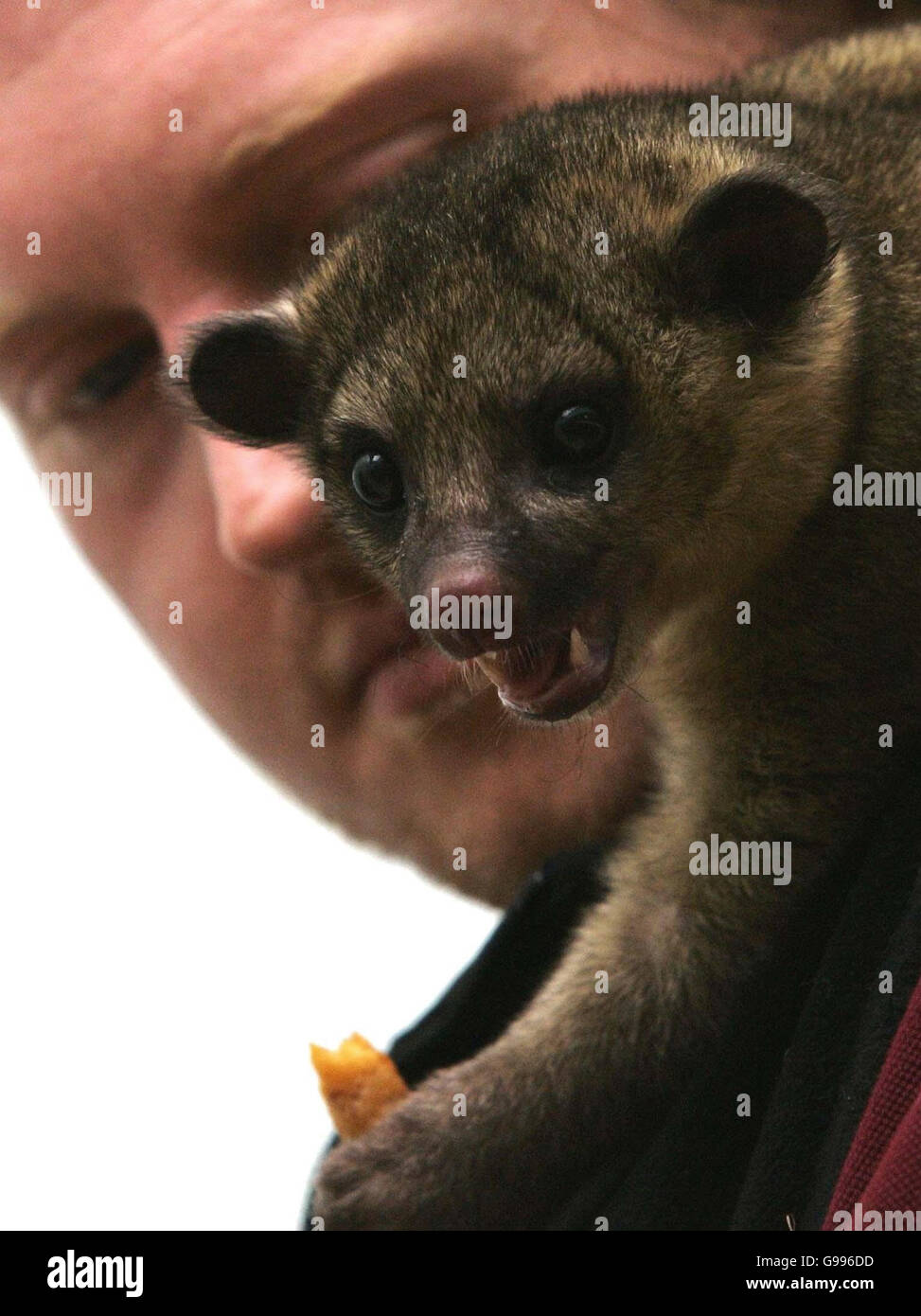 ANIMALS Kinkajou Stock Photohttps://www.alamy.com/image-license-details/?v=1https://www.alamy.com/stock-photo-animals-kinkajou-108996761.html
ANIMALS Kinkajou Stock Photohttps://www.alamy.com/image-license-details/?v=1https://www.alamy.com/stock-photo-animals-kinkajou-108996761.htmlRMG996DD–ANIMALS Kinkajou
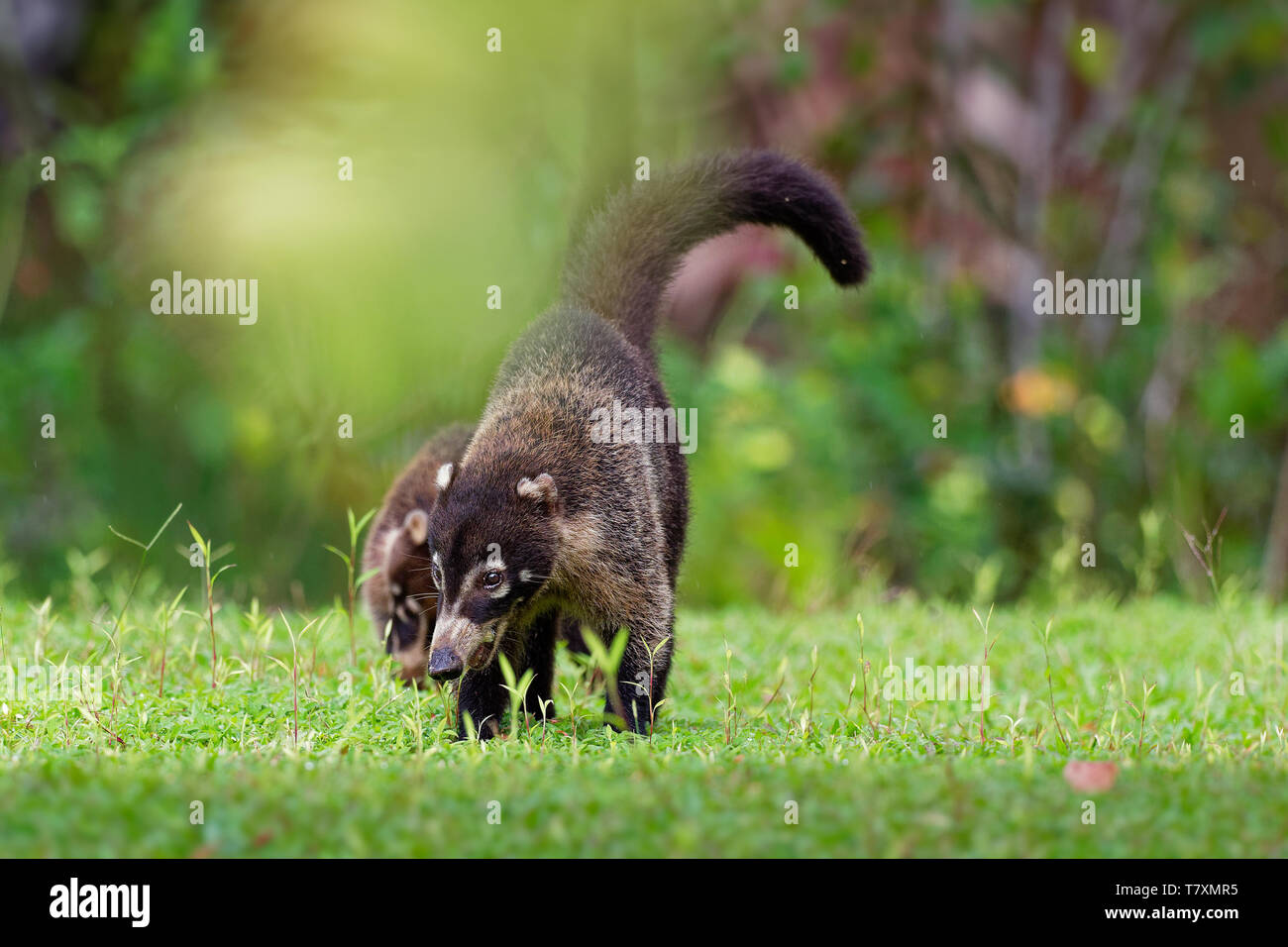 White-nosed Coati - Nasua narica, known as the coatimundi, member of the family Procyonidae (raccoons and their relatives). Local Spanish names for th Stock Photohttps://www.alamy.com/image-license-details/?v=1https://www.alamy.com/white-nosed-coati-nasua-narica-known-as-the-coatimundi-member-of-the-family-procyonidae-raccoons-and-their-relatives-local-spanish-names-for-th-image245834825.html
White-nosed Coati - Nasua narica, known as the coatimundi, member of the family Procyonidae (raccoons and their relatives). Local Spanish names for th Stock Photohttps://www.alamy.com/image-license-details/?v=1https://www.alamy.com/white-nosed-coati-nasua-narica-known-as-the-coatimundi-member-of-the-family-procyonidae-raccoons-and-their-relatives-local-spanish-names-for-th-image245834825.htmlRFT7XMR5–White-nosed Coati - Nasua narica, known as the coatimundi, member of the family Procyonidae (raccoons and their relatives). Local Spanish names for th
 ANIMALS Kinkajou Stock Photohttps://www.alamy.com/image-license-details/?v=1https://www.alamy.com/stock-photo-animals-kinkajou-108996709.html
ANIMALS Kinkajou Stock Photohttps://www.alamy.com/image-license-details/?v=1https://www.alamy.com/stock-photo-animals-kinkajou-108996709.htmlRMG996BH–ANIMALS Kinkajou
 White-nosed Coati - Nasua narica, known as the coatimundi, member of the family Procyonidae (raccoons and their relatives). Local Spanish names for th Stock Photohttps://www.alamy.com/image-license-details/?v=1https://www.alamy.com/white-nosed-coati-nasua-narica-known-as-the-coatimundi-member-of-the-family-procyonidae-raccoons-and-their-relatives-local-spanish-names-for-th-image384119780.html
White-nosed Coati - Nasua narica, known as the coatimundi, member of the family Procyonidae (raccoons and their relatives). Local Spanish names for th Stock Photohttps://www.alamy.com/image-license-details/?v=1https://www.alamy.com/white-nosed-coati-nasua-narica-known-as-the-coatimundi-member-of-the-family-procyonidae-raccoons-and-their-relatives-local-spanish-names-for-th-image384119780.htmlRF2D8X4KG–White-nosed Coati - Nasua narica, known as the coatimundi, member of the family Procyonidae (raccoons and their relatives). Local Spanish names for th
 White-nosed Coati - Nasua narica, known as the coatimundi, member of the family Procyonidae (raccoons and their relatives). Local Spanish names for th Stock Photohttps://www.alamy.com/image-license-details/?v=1https://www.alamy.com/white-nosed-coati-nasua-narica-known-as-the-coatimundi-member-of-the-family-procyonidae-raccoons-and-their-relatives-local-spanish-names-for-th-image245834820.html
White-nosed Coati - Nasua narica, known as the coatimundi, member of the family Procyonidae (raccoons and their relatives). Local Spanish names for th Stock Photohttps://www.alamy.com/image-license-details/?v=1https://www.alamy.com/white-nosed-coati-nasua-narica-known-as-the-coatimundi-member-of-the-family-procyonidae-raccoons-and-their-relatives-local-spanish-names-for-th-image245834820.htmlRFT7XMR0–White-nosed Coati - Nasua narica, known as the coatimundi, member of the family Procyonidae (raccoons and their relatives). Local Spanish names for th
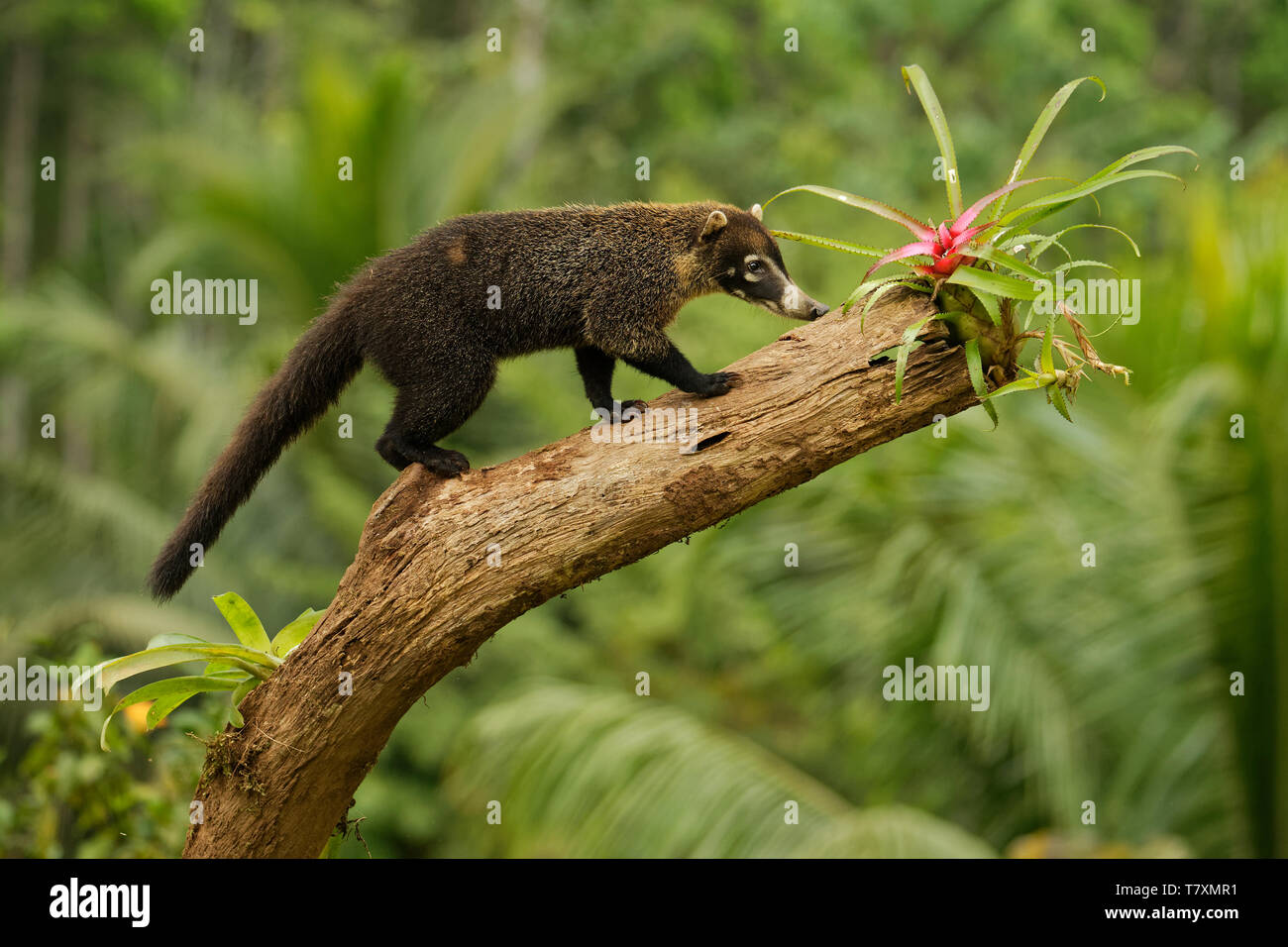 White-nosed Coati - Nasua narica, known as the coatimundi, member of the family Procyonidae (raccoons and their relatives). Local Spanish names for th Stock Photohttps://www.alamy.com/image-license-details/?v=1https://www.alamy.com/white-nosed-coati-nasua-narica-known-as-the-coatimundi-member-of-the-family-procyonidae-raccoons-and-their-relatives-local-spanish-names-for-th-image245834821.html
White-nosed Coati - Nasua narica, known as the coatimundi, member of the family Procyonidae (raccoons and their relatives). Local Spanish names for th Stock Photohttps://www.alamy.com/image-license-details/?v=1https://www.alamy.com/white-nosed-coati-nasua-narica-known-as-the-coatimundi-member-of-the-family-procyonidae-raccoons-and-their-relatives-local-spanish-names-for-th-image245834821.htmlRFT7XMR1–White-nosed Coati - Nasua narica, known as the coatimundi, member of the family Procyonidae (raccoons and their relatives). Local Spanish names for th
 White-nosed Coati - Nasua narica, known as the coatimundi, member of the family Procyonidae (raccoons and their relatives). Local Spanish names for th Stock Photohttps://www.alamy.com/image-license-details/?v=1https://www.alamy.com/white-nosed-coati-nasua-narica-known-as-the-coatimundi-member-of-the-family-procyonidae-raccoons-and-their-relatives-local-spanish-names-for-th-image384119779.html
White-nosed Coati - Nasua narica, known as the coatimundi, member of the family Procyonidae (raccoons and their relatives). Local Spanish names for th Stock Photohttps://www.alamy.com/image-license-details/?v=1https://www.alamy.com/white-nosed-coati-nasua-narica-known-as-the-coatimundi-member-of-the-family-procyonidae-raccoons-and-their-relatives-local-spanish-names-for-th-image384119779.htmlRF2D8X4KF–White-nosed Coati - Nasua narica, known as the coatimundi, member of the family Procyonidae (raccoons and their relatives). Local Spanish names for th
 White-nosed Coati - Nasua narica, known as the coatimundi, member of the family Procyonidae (raccoons and their relatives). Local Spanish names for th Stock Photohttps://www.alamy.com/image-license-details/?v=1https://www.alamy.com/white-nosed-coati-nasua-narica-known-as-the-coatimundi-member-of-the-family-procyonidae-raccoons-and-their-relatives-local-spanish-names-for-th-image245834823.html
White-nosed Coati - Nasua narica, known as the coatimundi, member of the family Procyonidae (raccoons and their relatives). Local Spanish names for th Stock Photohttps://www.alamy.com/image-license-details/?v=1https://www.alamy.com/white-nosed-coati-nasua-narica-known-as-the-coatimundi-member-of-the-family-procyonidae-raccoons-and-their-relatives-local-spanish-names-for-th-image245834823.htmlRFT7XMR3–White-nosed Coati - Nasua narica, known as the coatimundi, member of the family Procyonidae (raccoons and their relatives). Local Spanish names for th
 White-nosed Coati - Nasua narica, known as the coatimundi, member of the family Procyonidae (raccoons and their relatives). Local Spanish names for th Stock Photohttps://www.alamy.com/image-license-details/?v=1https://www.alamy.com/white-nosed-coati-nasua-narica-known-as-the-coatimundi-member-of-the-family-procyonidae-raccoons-and-their-relatives-local-spanish-names-for-th-image246165290.html
White-nosed Coati - Nasua narica, known as the coatimundi, member of the family Procyonidae (raccoons and their relatives). Local Spanish names for th Stock Photohttps://www.alamy.com/image-license-details/?v=1https://www.alamy.com/white-nosed-coati-nasua-narica-known-as-the-coatimundi-member-of-the-family-procyonidae-raccoons-and-their-relatives-local-spanish-names-for-th-image246165290.htmlRFT8DP9E–White-nosed Coati - Nasua narica, known as the coatimundi, member of the family Procyonidae (raccoons and their relatives). Local Spanish names for th
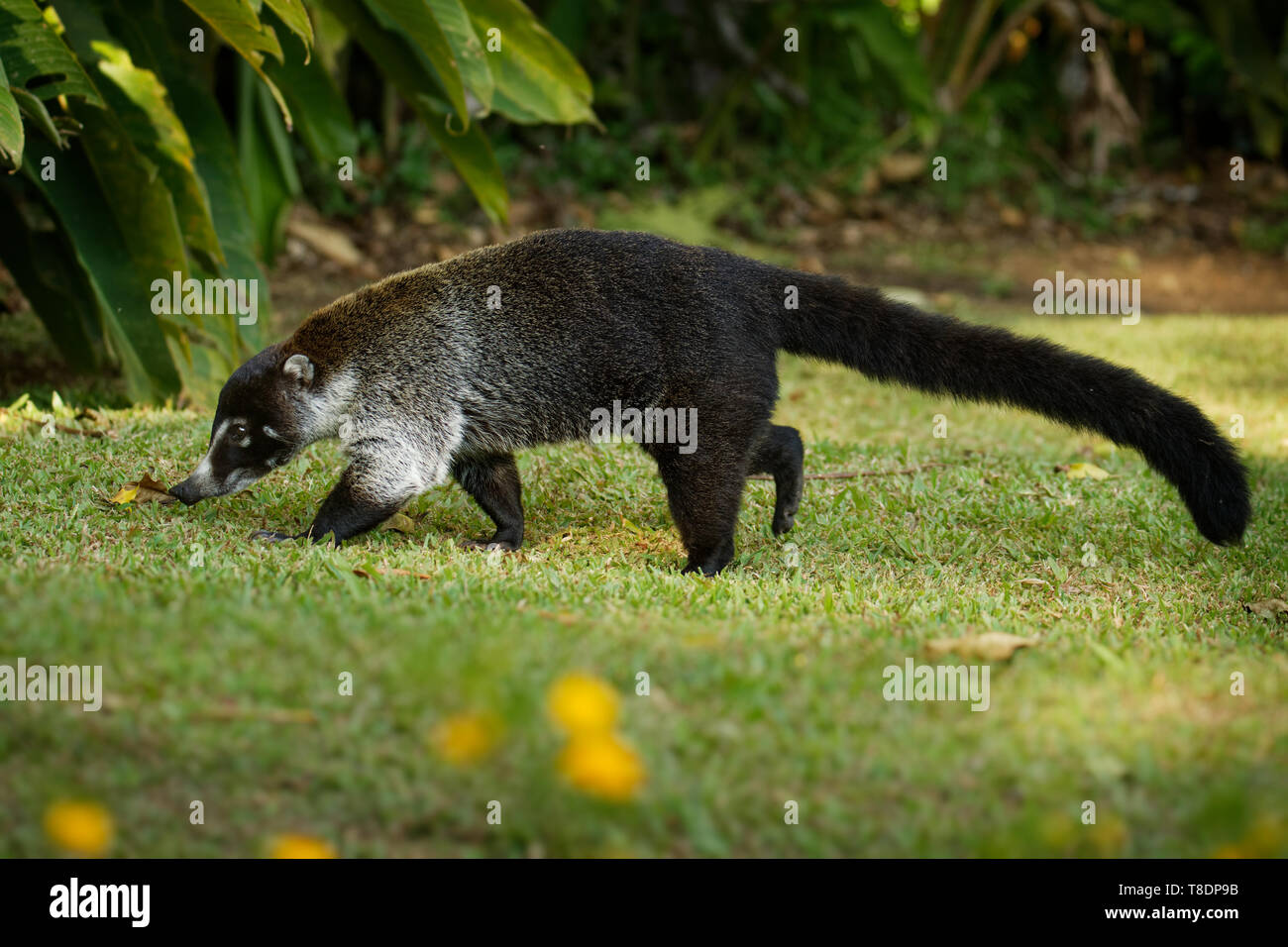 White-nosed Coati - Nasua narica, known as the coatimundi, member of the family Procyonidae (raccoons and their relatives). Local Spanish names for th Stock Photohttps://www.alamy.com/image-license-details/?v=1https://www.alamy.com/white-nosed-coati-nasua-narica-known-as-the-coatimundi-member-of-the-family-procyonidae-raccoons-and-their-relatives-local-spanish-names-for-th-image246165287.html
White-nosed Coati - Nasua narica, known as the coatimundi, member of the family Procyonidae (raccoons and their relatives). Local Spanish names for th Stock Photohttps://www.alamy.com/image-license-details/?v=1https://www.alamy.com/white-nosed-coati-nasua-narica-known-as-the-coatimundi-member-of-the-family-procyonidae-raccoons-and-their-relatives-local-spanish-names-for-th-image246165287.htmlRFT8DP9B–White-nosed Coati - Nasua narica, known as the coatimundi, member of the family Procyonidae (raccoons and their relatives). Local Spanish names for th
 White-nosed Coati - Nasua narica, known as the coatimundi, member of the family Procyonidae (raccoons and their relatives). Local Spanish names for th Stock Photohttps://www.alamy.com/image-license-details/?v=1https://www.alamy.com/white-nosed-coati-nasua-narica-known-as-the-coatimundi-member-of-the-family-procyonidae-raccoons-and-their-relatives-local-spanish-names-for-th-image384799299.html
White-nosed Coati - Nasua narica, known as the coatimundi, member of the family Procyonidae (raccoons and their relatives). Local Spanish names for th Stock Photohttps://www.alamy.com/image-license-details/?v=1https://www.alamy.com/white-nosed-coati-nasua-narica-known-as-the-coatimundi-member-of-the-family-procyonidae-raccoons-and-their-relatives-local-spanish-names-for-th-image384799299.htmlRF2DA13C3–White-nosed Coati - Nasua narica, known as the coatimundi, member of the family Procyonidae (raccoons and their relatives). Local Spanish names for th
 White-nosed Coati - Nasua narica, known as the coatimundi, member of the family Procyonidae (raccoons and their relatives). Local Spanish names for th Stock Photohttps://www.alamy.com/image-license-details/?v=1https://www.alamy.com/white-nosed-coati-nasua-narica-known-as-the-coatimundi-member-of-the-family-procyonidae-raccoons-and-their-relatives-local-spanish-names-for-th-image384799289.html
White-nosed Coati - Nasua narica, known as the coatimundi, member of the family Procyonidae (raccoons and their relatives). Local Spanish names for th Stock Photohttps://www.alamy.com/image-license-details/?v=1https://www.alamy.com/white-nosed-coati-nasua-narica-known-as-the-coatimundi-member-of-the-family-procyonidae-raccoons-and-their-relatives-local-spanish-names-for-th-image384799289.htmlRF2DA13BN–White-nosed Coati - Nasua narica, known as the coatimundi, member of the family Procyonidae (raccoons and their relatives). Local Spanish names for th
 White-nosed Coati - Nasua narica, known as the coatimundi, member of the family Procyonidae (raccoons and their relatives). Local Spanish names for th Stock Photohttps://www.alamy.com/image-license-details/?v=1https://www.alamy.com/white-nosed-coati-nasua-narica-known-as-the-coatimundi-member-of-the-family-procyonidae-raccoons-and-their-relatives-local-spanish-names-for-th-image384799284.html
White-nosed Coati - Nasua narica, known as the coatimundi, member of the family Procyonidae (raccoons and their relatives). Local Spanish names for th Stock Photohttps://www.alamy.com/image-license-details/?v=1https://www.alamy.com/white-nosed-coati-nasua-narica-known-as-the-coatimundi-member-of-the-family-procyonidae-raccoons-and-their-relatives-local-spanish-names-for-th-image384799284.htmlRF2DA13BG–White-nosed Coati - Nasua narica, known as the coatimundi, member of the family Procyonidae (raccoons and their relatives). Local Spanish names for th
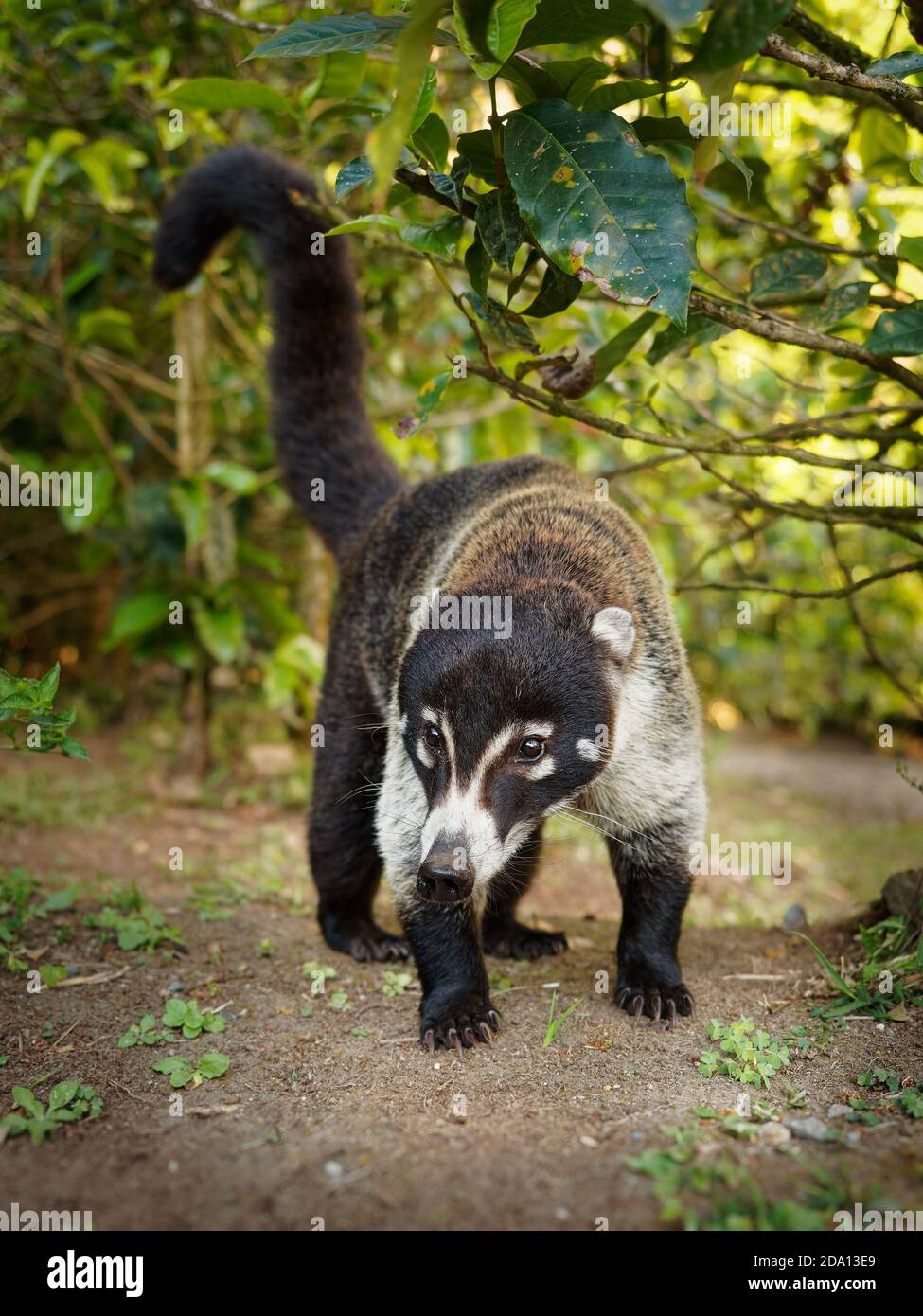 White-nosed Coati - Nasua narica, known as the coatimundi, member of the family Procyonidae (raccoons and their relatives). Local Spanish names for th Stock Photohttps://www.alamy.com/image-license-details/?v=1https://www.alamy.com/white-nosed-coati-nasua-narica-known-as-the-coatimundi-member-of-the-family-procyonidae-raccoons-and-their-relatives-local-spanish-names-for-th-image384799361.html
White-nosed Coati - Nasua narica, known as the coatimundi, member of the family Procyonidae (raccoons and their relatives). Local Spanish names for th Stock Photohttps://www.alamy.com/image-license-details/?v=1https://www.alamy.com/white-nosed-coati-nasua-narica-known-as-the-coatimundi-member-of-the-family-procyonidae-raccoons-and-their-relatives-local-spanish-names-for-th-image384799361.htmlRF2DA13E9–White-nosed Coati - Nasua narica, known as the coatimundi, member of the family Procyonidae (raccoons and their relatives). Local Spanish names for th
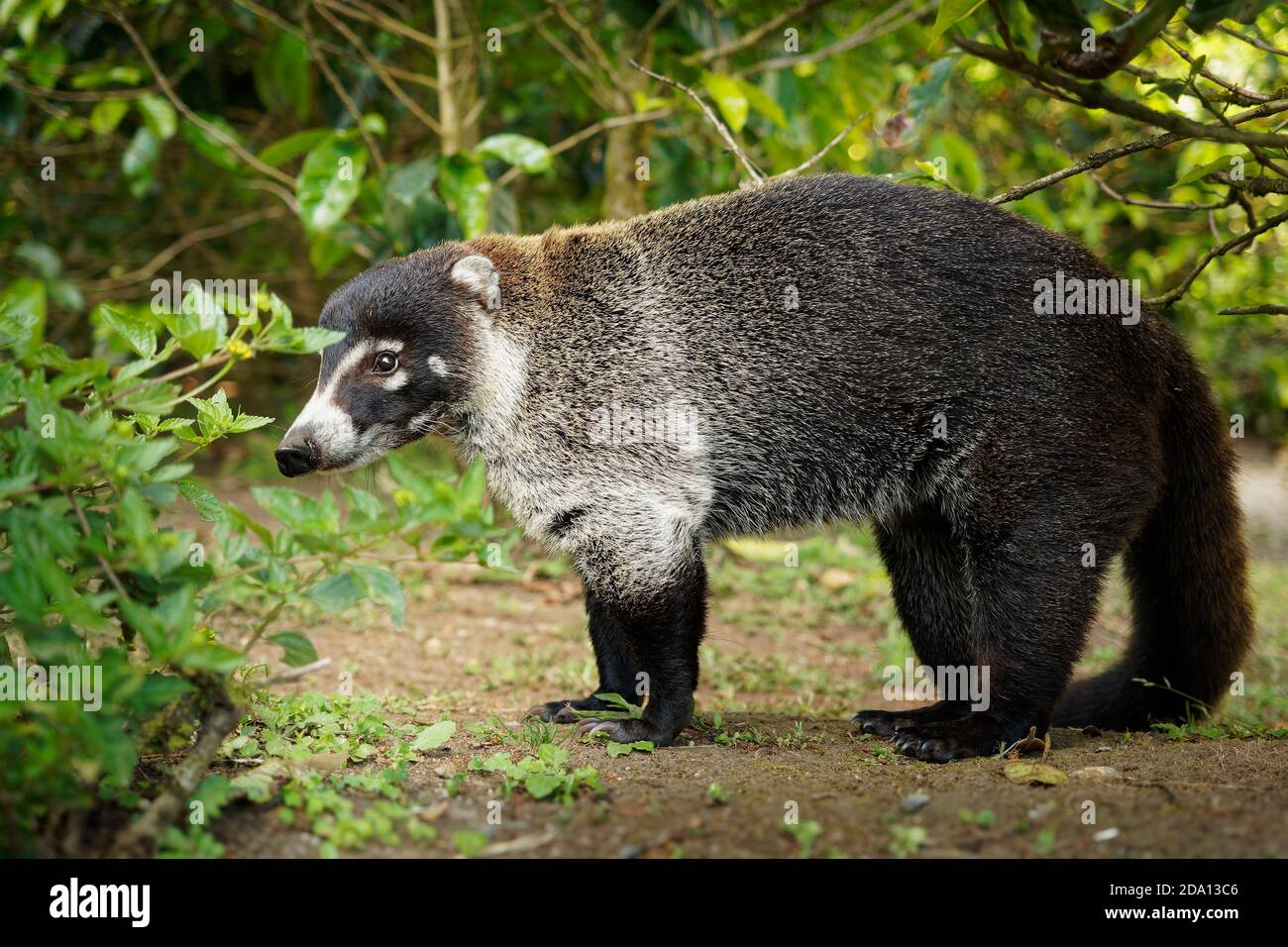 White-nosed Coati - Nasua narica, known as the coatimundi, member of the family Procyonidae (raccoons and their relatives). Local Spanish names for th Stock Photohttps://www.alamy.com/image-license-details/?v=1https://www.alamy.com/white-nosed-coati-nasua-narica-known-as-the-coatimundi-member-of-the-family-procyonidae-raccoons-and-their-relatives-local-spanish-names-for-th-image384799302.html
White-nosed Coati - Nasua narica, known as the coatimundi, member of the family Procyonidae (raccoons and their relatives). Local Spanish names for th Stock Photohttps://www.alamy.com/image-license-details/?v=1https://www.alamy.com/white-nosed-coati-nasua-narica-known-as-the-coatimundi-member-of-the-family-procyonidae-raccoons-and-their-relatives-local-spanish-names-for-th-image384799302.htmlRF2DA13C6–White-nosed Coati - Nasua narica, known as the coatimundi, member of the family Procyonidae (raccoons and their relatives). Local Spanish names for th
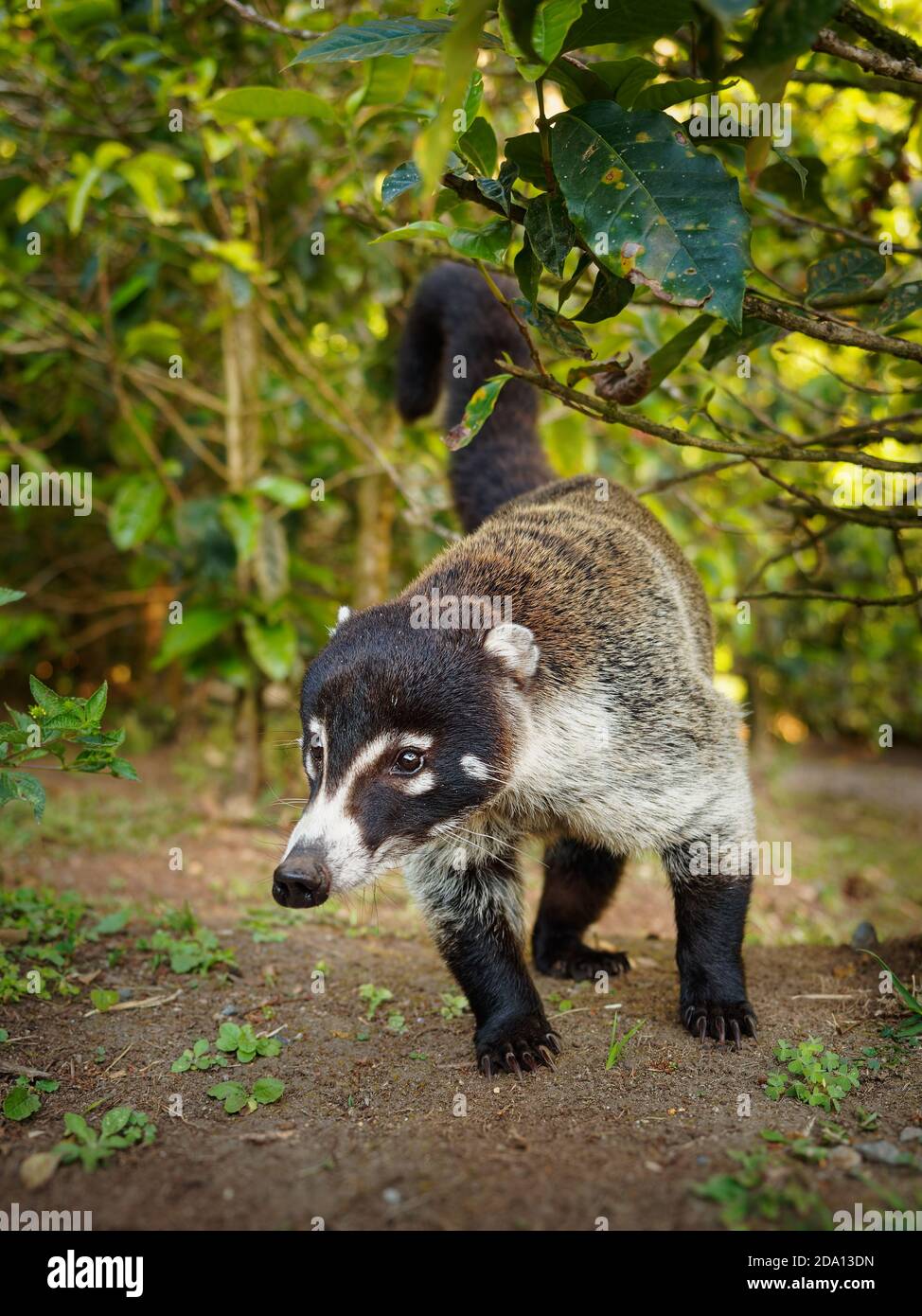 White-nosed Coati - Nasua narica, known as the coatimundi, member of the family Procyonidae (raccoons and their relatives). Local Spanish names for th Stock Photohttps://www.alamy.com/image-license-details/?v=1https://www.alamy.com/white-nosed-coati-nasua-narica-known-as-the-coatimundi-member-of-the-family-procyonidae-raccoons-and-their-relatives-local-spanish-names-for-th-image384799345.html
White-nosed Coati - Nasua narica, known as the coatimundi, member of the family Procyonidae (raccoons and their relatives). Local Spanish names for th Stock Photohttps://www.alamy.com/image-license-details/?v=1https://www.alamy.com/white-nosed-coati-nasua-narica-known-as-the-coatimundi-member-of-the-family-procyonidae-raccoons-and-their-relatives-local-spanish-names-for-th-image384799345.htmlRF2DA13DN–White-nosed Coati - Nasua narica, known as the coatimundi, member of the family Procyonidae (raccoons and their relatives). Local Spanish names for th